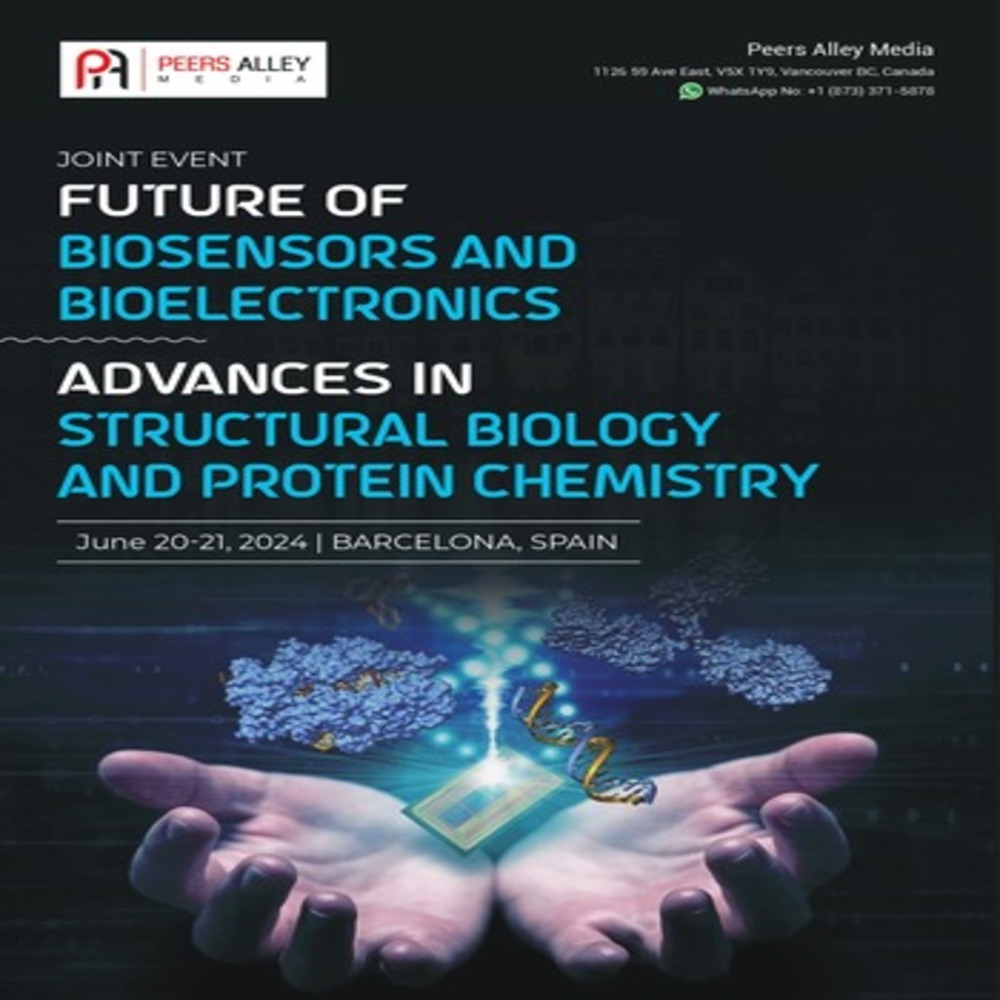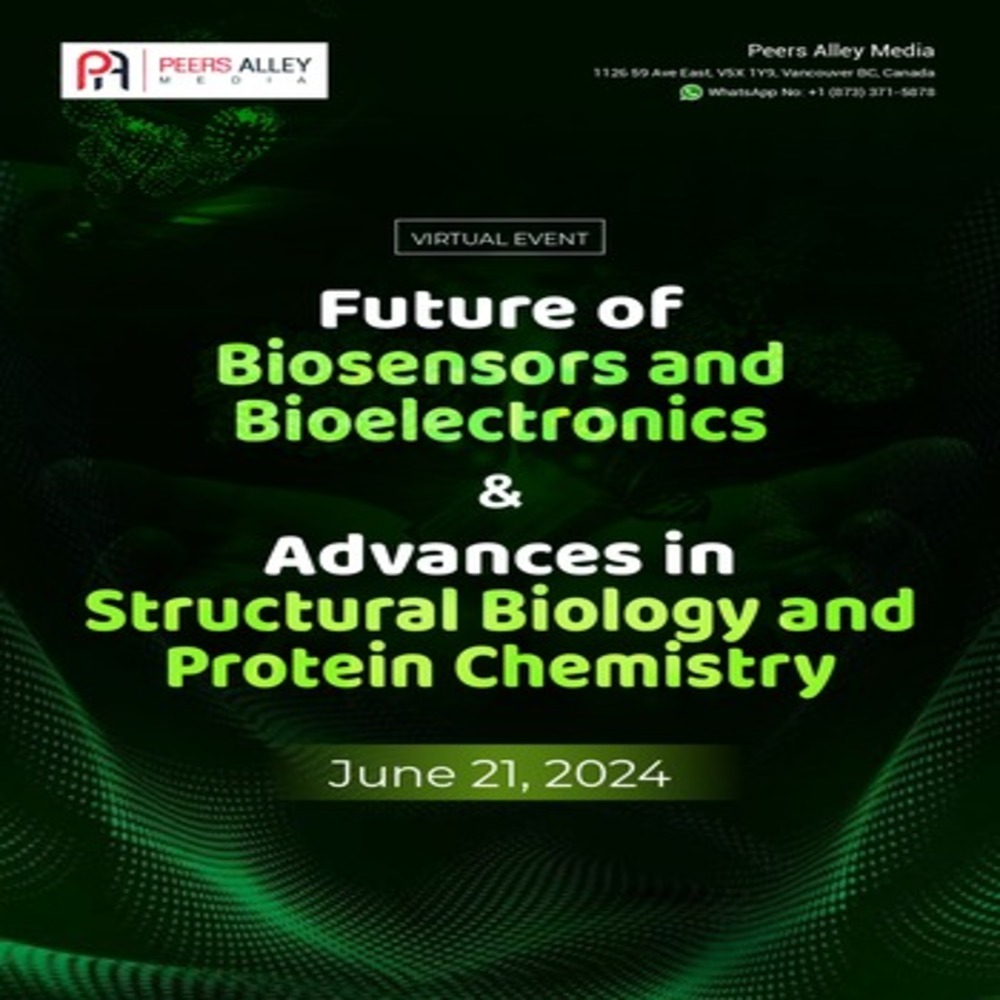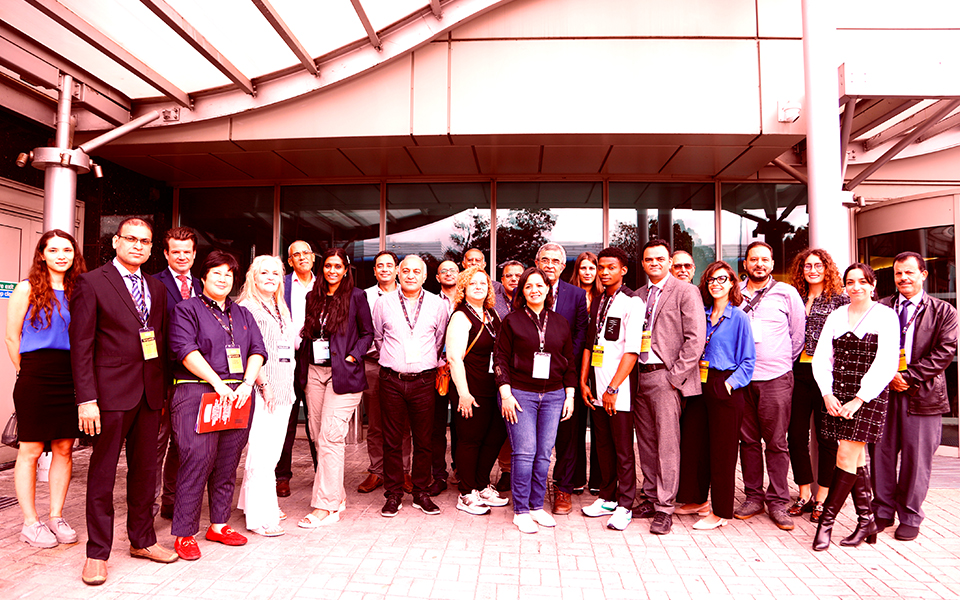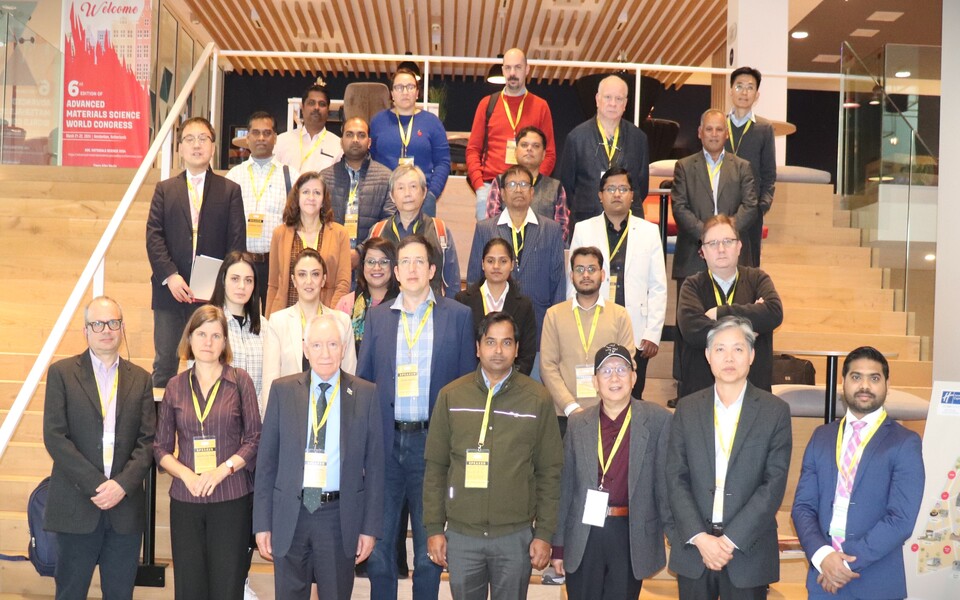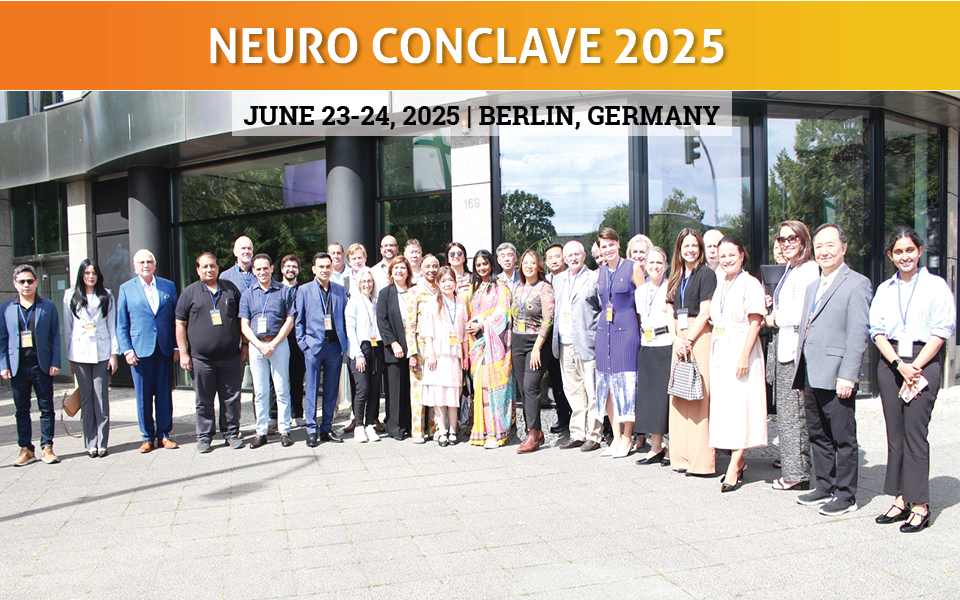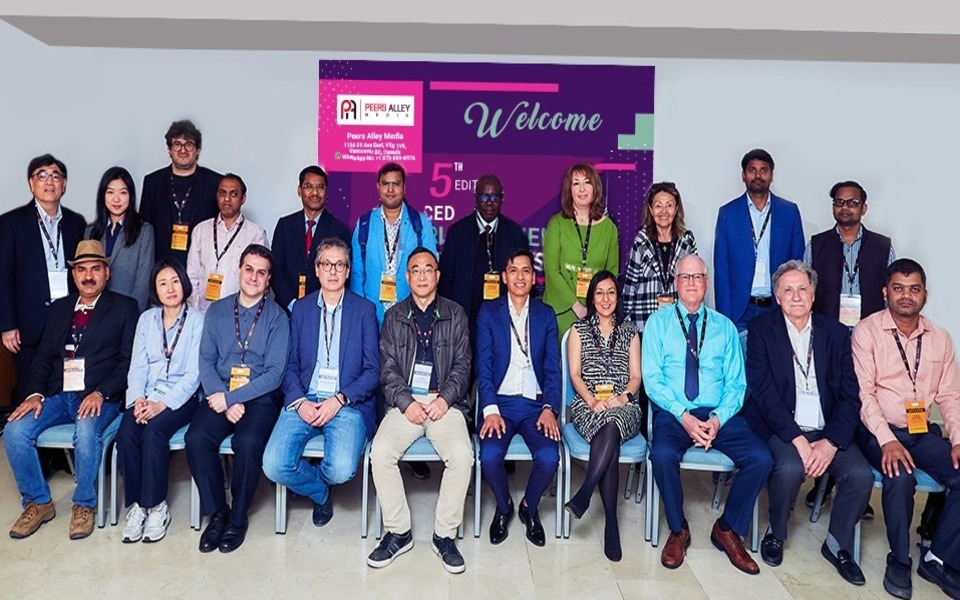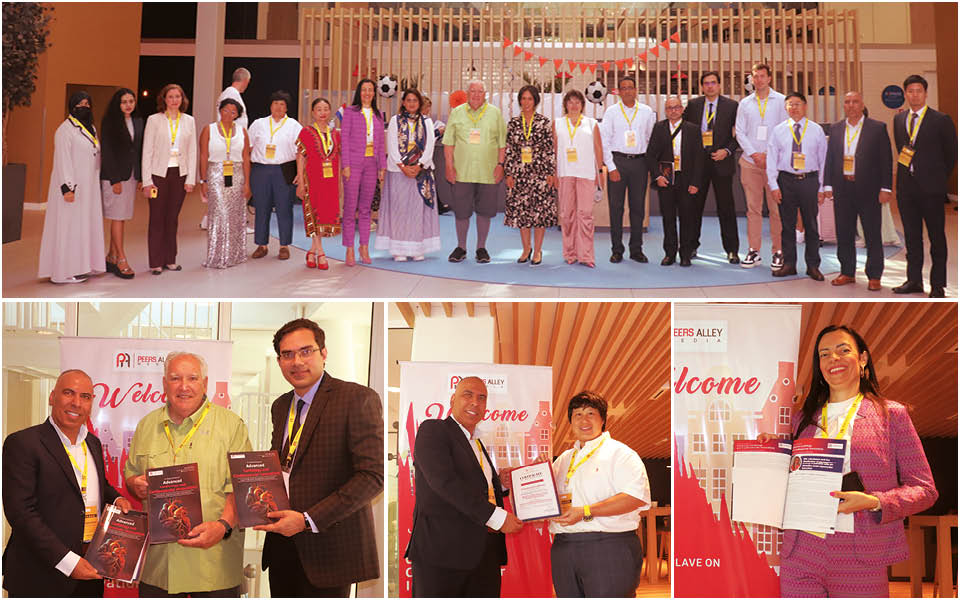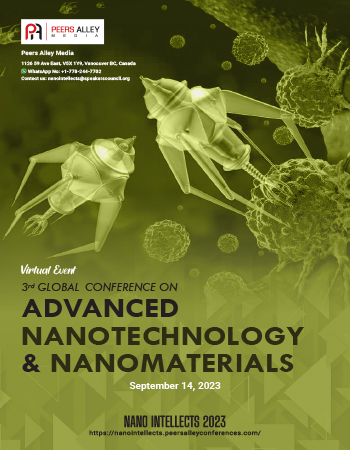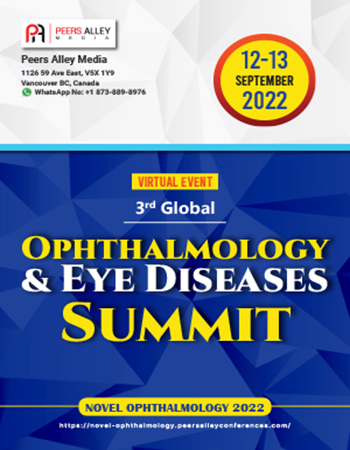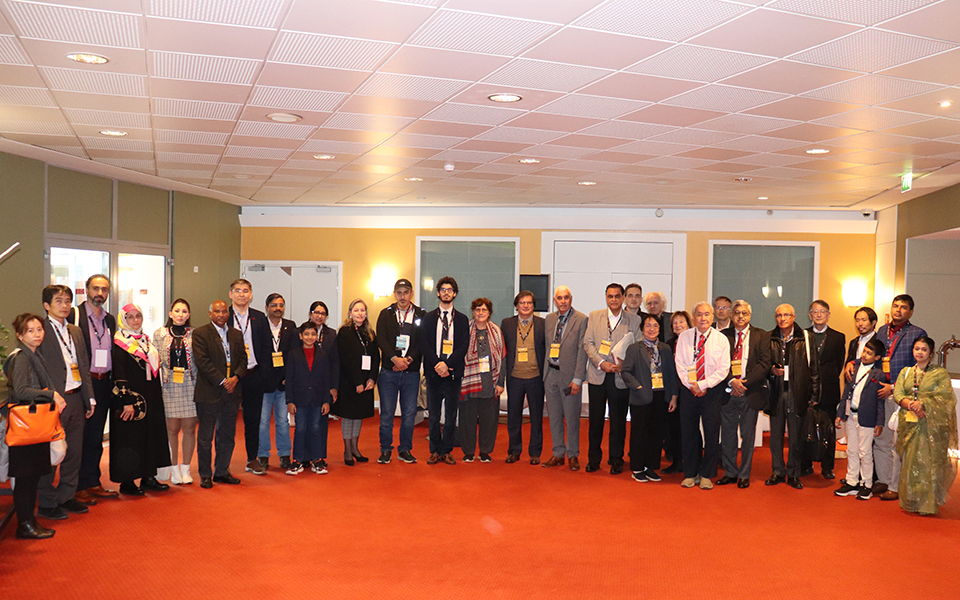
BioL-BioS 2023
Peers Alley Media,Canada

Primary goal of attending an international conference is to present a paper to the experts and influencers. It gives you a platform to exchange your interest-related thoughts, paving the way for possible future collaborations.

Use this platform to build connections with an elite group of wise men and women to enhance your intellect. Young entrepreneurs, this is a great platform to connect with your peers.

Knowledge is Power. Knowledge teaches skills. Skills define excellence. Use this platform to become cognizant of your interest area to achieve excellence in your domain.

Attending a conference give you opportunity to get your abstract or paper published in conference proceedings

Meet and greet a myriad of industry professionals and academia experts with common interest. Every meal will be an opportunity to meet and interact with fellow researchers, attendees and experts.

Expand your professional competency and learn useful tips and tricks of your industry in our skill-building workshops.

Explore insights on recent advancements, new equipment, new techniques, and unpublished data, learn from thought-leaders and get to network with a great line up of speakers.

Our exhibits floor offers the attendees with a dynamic display of the latest products with cutting-edge technology.

Investing in you is the best investment. Peers Alley conferences give the patrons with a feeling of the serendipity of real learning, skill development in strategic workshops, networking and start-up opportunities, thus, is value for money.

Attending the conference gives you much needed break from your regular duties. It also allows you to explore new cities, culture and meet new people. You will feel energized and rejuvenated to return to the university and continue with the job after attending the conference.
Conferences are vital forum for academic researchers and business leaders. "It involves multiple presentations, interactive breakout sessions, hands-on product demonstrations and unrivalled networking opportunities".
We have invited some of the world's most sought-after keynote speakers, experts, brand ambassadors, and industry leaders to share their thoughts and ideas with our conference guests.
Register Now
The 2nd Global Conclave on the Future of Biosensors and Bioelectronics will provide researchers, academics, and industry professionals with a unique opportunity to explore the latest innovations and trends in this rapidly evolving field.
Some of the top innovations that will be discussed at the conference include-
• Wearable biosensors that enable continuous monitoring of health parameters, such as glucose levels and heart rate, for personalized healthcare.
• Development of nanobiosensors that can detect diseases at an early stage, leading to improved treatment outcomes.
• Integration of artificial intelligence and machine learning algorithms in biosensor systems, leading to improved accuracy and speed of diagnosis.
• Advances in flexible and stretchable electronics that allow biosensors to conform to the shape of the body and offer more comfort and convenience.
• Development of implantable biosensors that can monitor biomarkers in real-time, leading to improved disease management and treatment.
Biosensors and Bioelectronics Proceedings 

Dear Participant,
On behalf of the organizing committee,
It is with great pleasure that we extend our warmest welcome to the 2nd Global Conclave on Future of Biosensors and Bioelectronics (Future of BSBE 2025), scheduled to be held on June 26-27, 2025, in the vibrant city of Berlin, Germany Your enthusiastic participation and contribution are highly anticipated as we gather leading experts, researchers, and innovators from around the globe to explore the latest advancements and future prospects in biosensors and bioelectronics. This event promises to be an enriching experience filled with insightful discussions, groundbreaking research presentations, and ample networking opportunities. We are thrilled to have you join us and share your expertise with colleagues and peers from diverse backgrounds. Once again, welcome to Future of BSBE 2025! We look forward to your presence and meaningful engagement in shaping the future landscape of biosensors and bioelectronics.
Dear Esteemed Guests,
Welcome to the 2nd Global Conclave on the Future of Biosensors and Bioelectronics, which will be held on June 26-27, 2025 in the beautiful city of Berlin, Germany.! We are honoured to welcome you here today to discuss the latest trends and advancements in the biosensors and bioelectronics industry.
The global market for biosensors and bioelectronics is expanding at an unprecedented rate. According to recent reports, the global biosensors market is projected to reach a value of $31.5 billion by 2025, with a CAGR of 8.1% from 2020 to 2025. Similarly, the global bioelectronics market is expected to grow at a CAGR of 9.3% from 2020 to 2025, reaching a value of $37.4 billion by 2025.
This event will be a great opportunity for all attendees to gain valuable insights into this rapidly evolving field, and to explore the latest technologies and trends that are driving growth and innovation. Once again, a warm welcome to all our attendees, and we look forward to an exciting and productive conference.

Former Owner of the Advanced Materials Laboratory, Inc, USA

Washington University in St. Louis, USA

Old Dominion University, USA

University Of Minnesota, USA

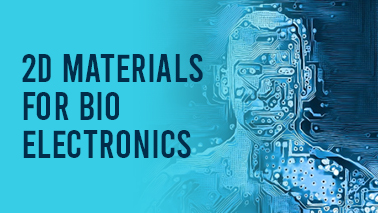
2D materials have recently drawn interest because for their potential use in bioelectronics. It poses unique electronic, mechanical, and chemical properties. These materials have high surface-to-volume ratios, are ultrathin (just a few atoms or molecules thick), and are well suited for interacting with biological systems.
Graphene, a single layer of carbon atoms which arranged in a hexagonal structure, Graphene is one of the most studied 2D materials for bioelectronics. It poses high electrical conductivity, more surface area, and biocompatibility, making it a desirable choice for various biomedical applications, such as biosensors, drug delivery, and tissue engineering.
Other 2D materials like transition metal dichalcogenides (TMDs) such as molybdenum disulfide (MoS2) and tungsten diselenide (WSe2), have a similar hexagonal lattice structure to graphene. But with a greater range of electrical and optical properties.
Moreover, black phosphorus (BP) is establishing itself as a feasible 2D material for bioelectronics, due to its adjustable bandgap and biocompatibility. BP-based devices have been demonstrated for biosensing, bioimaging, and drug delivery applications.
Over all, 2D materials have become popular for employing in bioelectronics due to their unique characteristics, and active research is exploring their potential for a wide range of biomedical applications.
Tags
Chemical Sensors and Biosensors Conferences
Bioelectronics Conferences 2025 Canada
Implantable Bioelectronics Conferences
Biosensors Conferences
Magneto Elastic Biosensors Conferences
Biosensor Technology Conferences
Wearable Biosensors Conferences
Biosensors Conferences 2025
Nanobiosensors Conferences
Bioelectronics Conferences 2025
Bioelectronics Conferences 2025 Asia
Biosensors Conferences 2025
Biosensing Annual Conferences 2025
Biosensors Conferences 2025 China
Electrochemical Biosensors Conferences
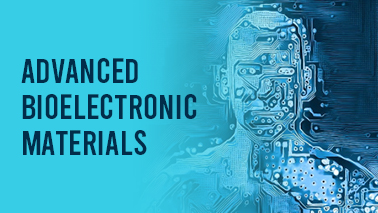
The term "advanced bioelectronic materials" refers to materials that have been intentionally developed or modified to interact with biological systems in a designed beneficial manner. These elements commonly appear in medical devices like medication delivery systems, neural probes, and biosensors.
Some examples of advanced bioelectronic materials include:
Conducting polymers: Polymers made from organic material that have been developed to conduct electricity are known as conducting polymers. They can be applied to make flexible, permeable electrodes that activate and detect the nervous system.
Hydrogels: Hydrogels are firm, water-based substances that possess the characteristics of biological tissues. Hydrogels may be utilized as platforms for drug delivery and tissue engineering.
Carbon nanotubes: They are cylinder-shaped materials consisting of carbon atoms that shows superior mechanical and electrical abilities. Flexible, biocompatible electrodes for neurological stimulation and sensing might be created with carbon nanotubes.
Metal-organic frameworks (MOFs): Metal-organic frameworks (MOFs) are porous substances formed mainly of metal ions coupled by organic molecules. For targeted drug delivery, MOFs can be used to encapsulate medication or proteins.
Quantum dots: Quantum dots are semiconductor-based nanocrystals with remarkable optical properties. Quantum dots can be used for bioimaging and biosensing applications.
Overall, advanced bioelectronic materials plays a crucial role for the development of upcoming generation of biomedical devices that can interact with biological systems in a safe and effective manner. Ongoing research in this area is focused to develop new materials with improved biocompatibility, functionality, and stability.
Tags
Biosensing Meetings
Bioelectronics Conferences 2025 China
Optical Biosensors Conferences
Implantable Bioelectronics Conferences
Magneto Elastic Biosensors Conferences
Biosensors Conferences 2025
Bioelectronics Conferences 2025 Canada
Biosensing Annual Conferences 2025
Bioelectronics Conferences 2025
Biosensors Conferences
Wearable Bioelectronics Conferences
Biosensor Technology Conferences
Bioelectronics Conferences 2025 USA
Biosensors Conferences 2025 China
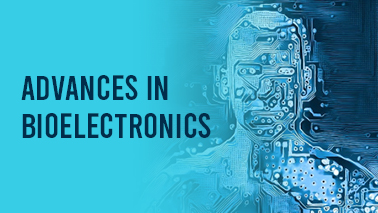
Bioelectronics is a quick developing field that brings together electronics and biology in order to produce new biomedical devices and technologies. Here are some recent bioelectronics advances in bioelectronics:
Implantable medical devices: Implantable devices, such as pacemakers, defibrillators, and brain prosthesis, have made substantial advances. These devices are used to track and regulate biological functions by using advanced sensors, electronics, and communication technologies.
Wearable devices: Wearable devices such as fitness trackers and smartwatches have increased their demand in recent time. Sensors and wireless communication technologies are used in these devices for monitoring physiological factors such as heart rate, blood pressure, and activity levels.
Neural interfaces: Brain-computer interfaces (BCIs) and neural prosthesis are a few examples of neural interfaces that possess potential for improving the treatment of brain disorders. These devices analyses brain signals and control external devices using advanced electronics and signals processing methods.
Bioinspired materials: Bioinspired materials are being developed for reproducing the characteristics of biological tissues and organs, such as hydrogels and nanocomposites. These materials have the potential to enhance biomedical device performance and biocompatibility.
Biodegradable electronics: Biodegradable electronics are an innovative kind of device that dissolves or destroys over time, eliminating the need for surgical removal. These devices have the ability to significantly change the field of implanted devices, especially for temporary or diagnostic purposes.
Overall, advances in bioelectronics are enabling for the development of unique biomedical devices and technologies with the aim to improve human health and well-being. Ongoing research in this area is focused on developing new materials, gadgets, and technologies that can interact with biological systems in a safe and effective manner.
Tags
Biosensors Conferences 2025 Middle East
Biosensors Conferences 2025 USA
Wearable Biosensors Conferences
Advances in Biosensors Conferences
Implantable Bioelectronics Conferences
Chemical Sensors and Biosensors Conferences
Wearable Bioelectronics Conferences
Biosensing Annual Conferences 2025
Bioelectronics Conferences 2025 Canada
Biosensors Conferences 2025
Biosensing Meetings
Optical Biosensors Conferences
Bioelectronics Conferences 2025 Asia
Biosensors Conferences 2025
Bioelectronics Conferences 2025 Europe
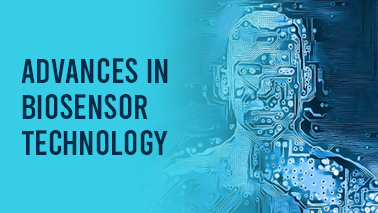
Bioelectronics is a fastest growing area that combines both electronics and biology in order to develop new biomedical devices and technology. Here are some recent bioelectronics advances:
Implantable medical devices: Implantable devices, such as pacemakers, defibrillators, and brain prosthesis, have made substantial advances. These gadgets monitor and regulate biological functions by utilizing modern sensors, electronics, and communication technologies.
Wearable technology: Fitness trackers and smartwatches, for example, have been increasingly popular in recent years. These gadgets track multiple physiological characteristics like heart rate, blood pressure, and activity levels using sensors and wireless communication technology.
Bioinspired materials: Bioinspired materials have been researched to mimic the properties of biological tissues and organs, such as hydrogels and nanocomposites. These materials have the potential to enhance biomedical device performance and biocompatibility.
Biodegradable electronics: Biodegradable electronics are a new kind of devices that dissolves or degrades over time, eliminating the need for surgical removal. These devices have the potential to revolutionize the field of implanted devices, particularly for temporary or diagnostic purposes.
Overall, major developments of bioelectronics are enabling the development of new biomedical devices and technologies that have the potential to improve human health and well-being. Ongoing research in this area is focused on producing new materials, devices and technologies that can interact safely and effectively with biological systems.
Tags
Biosensors Conferences 2025
Biosensor Technology Conferences
Chemical Sensors and Biosensors Conferences
Biosensors Conferences 2025 Middle East
Optical Biosensors Conferences
Bioelectronics Conferences 2025 USA
Bioelectronics Conferences 2025 Asia
Biosensors Conferences
Advances in Biosensors Conferences
Biosensors Conferences 2025 Japan
Bioelectronics Conferences 2025 USA
Nanobiosensors Conferences
Bioelectronics Conferences 2025 China
Electrochemical Biosensors Conferences
Wearable Bioelectronics Conferences
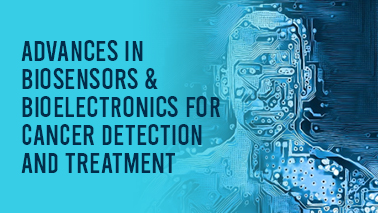
Biosensors and bioelectronics have the potential to revolutionize cancer detection and treatment. Here are some of the recent developments in this field:
Liquid biopsy: Liquid biopsy is a non-invasive method that examines the Circulation of Tumor Cells (CTCs) and Cell-Free DNA (cfDNA) in the blood. Biosensors and bioelectronics are being developed with high sensitivity and specificity to detect and quantify the CTCs and cfDNA.
Nanoparticle-based biosensors: Nanoparticles, such as gold nanoparticles and quantum dots, are being utilized to develop biosensors that are capable of detecting and quantifying cancer biomarkers in body fluids, such as proteins and nucleic acids.
Microfluidics-based biosensors: Microfluidics technology is being used to produce biosensors with high throughput and sensitivity that can examine small amounts of biological fluids such as blood and saliva.
Neural interfaces for cancer treatment: Deep Brain Stimulation (DBS) and Transcranial Magnetic Stimulation (TMS) are two kinds of neural interfaces that are being researched due to their potential for controlling the immune system and improve the effectiveness of cancer immunotherapy.
Smart drug delivery systems: Smart drug delivery systems, such as implantable devices and nanocarriers, are being developed to deliver chemotherapy medication and immunotherapeutic agents directly to cancer cells, by reducing side effects and toxicity.
Bioelectronic implants for pain management: Chronic pain is a usual symptom of cancer and cancer treatment. Bioelectronic implants, such as spinal cord stimulators and peripheral nerve stimulators, are being studied for their potential to reduce pain and improve quality of life in cancer patients.
Overall, biosensors and bioelectronics are providing new and innovative ways to detect and treat cancer. Ongoing research in this area is being focused to develop new technologies and applications that improves cancer diagnosis, treatment, and patient outcomes.
Tags
Nanobiosensors Conferences
Bioelectronics Conferences 2025 USA
Bioelectronics Conferences 2025 Canada
Biosensors Conferences 2025 USA
Magneto Elastic Biosensors Conferences
Bioelectronics Conferences 2025 Asia
Biosensing Meetings
Switchable Bioelectronics Conferences
Biosensing Annual Conferences 2025
Bioelectronics Conferences 2025
Wearable Biosensors Conferences
Chemical Sensors and Biosensors Conferences
Optical Biosensors Conferences
Bioelectronics Conferences 2025 Europe
Advances in Biosensors Conferences
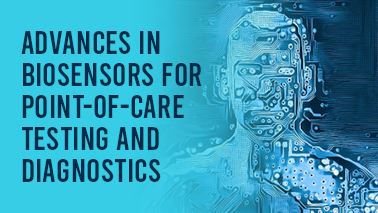
Biosensors have huge potential for point-of-care testing and diagnostics as they detect biomolecules effectively and precisely and can be employed in low-resource settings. Some recent developments in biosensors for point-of-care testing and diagnosis include:
Paper-based biosensors: Paper-based biosensors are inexpensive, portable, and disposable devices that can be used for point-of-care testing. They detect biomolecules such as glucose, cholesterol, and pathogenic pathogens using paper as a substrate.
Smartphone-based biosensors: Smartphone biosensors: Smartphone biosensors are small and portable devices that can be used for point-of-care testing. They detect and examine biomolecules such as proteins and nucleic acids using a smartphone's camera and computational power.
Wearable biosensors: Wearable biosensors, such as patches and wristbands, can be used continuously to track biomarkers such as glucose and lactate in real time. They provide patients with chronic illnesses with non-invasive easy monitoring.
Microfluidic biosensors: Microfluidic biosensors are miniature devices designed for analyzing small amounts of biological fluids with high sensitivity and specificity. They can be used to perform point-of-care testing on a wide range of biomolecules, including proteins and nucleic acids.
Nanoparticle-based biosensors: Nanoparticle-based biosensors: Nanoparticles, such as gold nanoparticles and quantum dots, have been utilized for developing biosensors that can detecting and quantifying a wide range of biomolecules, including infectious agents and cancer biomarkers.
Multiplexed biosensors: Multiplexed biosensors are devices that can detect and determine various biomolecules in a single test. They give quick and accurate point-of-care diagnostics for several kinds of diseases and conditions.
Overall, biosensors provide new and innovative methods for point-of-care testing and diagnosis, particularly in low-resource settings. In this field, ongoing research is focused on developing unique technologies and applications that may improve the accuracy, sensitivity, and specificity of biosensors for point-of-care testing and diagnostics.
Tags
Wearable Bioelectronics Conferences
Switchable Bioelectronics Conferences
Magneto Elastic Biosensors Conferences
Nanobiosensors Conferences
Bioelectronics Conferences 2025 Asia
Biosensors Conferences
Biosensors Conferences 2025 Middle East
Bioelectronics Conferences 2025 USA
Bioelectronics Conferences 2025 China
Biosensors Conferences 2025
Biosensing Annual Conferences 2025
Electrochemical Biosensors Conferences
Optical Biosensors Conferences
Chemical Sensors and Biosensors Conferences
Biosensor Technology Conferences
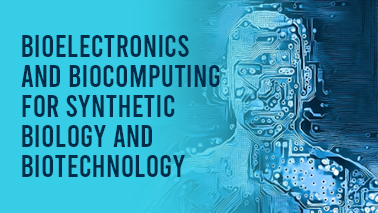
Bioelectronics and biocomputing are new fields that are expanding the scope of synthetic biology and biotechnology. Here are some recent developments in this field:
Synthetic biology circuits: Synthetic biology circuits are genetic circuits that may be designed to fulfill certain functions such as sensing and responding to environmental signals. In order to regulate the expression of genes in response to external signals, these circuits can be made using bioelectronics and biocomputing techniques.
Cell-free biocomputing: Cell-free biocomputing is a method to perform biocomputing services such as logical operations and pattern recognition using cell-free extracts. This method is more efficient and faster than standard cell-based biocomputing.
Biosensors for bioreactors: Biosensors are being developed to track and control bioreactors, which are used to produce biomolecules such as pharmaceuticals and biofuels on a large scale. Changes in the bioreactor environment, like as nutrient levels and pH, can be detected and responded by these biosensors.
Neural interfaces for biotechnology: Neural interfaces, such as optogenetics and electrical stimulation, are used to modify the behavior of cells and tissues. These methods can be utilized to improve biomolecule production in bioreactors and to produce tissues for regenerative medicine.
Bioelectronic implants for biotechnology: Bioelectronic implants, such as microfluidic devices and tissue-engineered constructs, are being developed for use in biotechnology applications. These implants have the potential to be used in drug delivery, cell-based treatments, and tissue engineering.
Biocomputing for drug discovery: Biocomputing for drug development: Biocomputing is being used to improve drug discovery by predicting the interactions of tiny compounds with biological targets. This approach has the potential to decrease the time and cost for drug development.
Overall, bioelectronics and biocomputing have introduced new methods to develop cells, tissues, and organisms for biotechnology applications. This field's ongoing research is focused toward creating new technologies and applications that can increase the efficiency, accuracy and scalability of biotechnology processes.
Tags
Biosensors Conferences 2025 USA
Biosensors Conferences 2025
Electrochemical Biosensors Conferences
Biosensors Conferences
Implantable Bioelectronics Conferences
Bioelectronics Conferences 2025
Optical Biosensors Conferences
Bioelectronics Conferences 2025 Europe
Bioelectronics Conferences 2025 USA
Biosensors Conferences 2025 Japan
Bioelectronics Conferences 2025 Canada
Wearable Biosensors Conferences
Bioelectronics Conferences 2025 USA
Biosensors Conferences 2025 China
Biosensors Conferences 2025 Middle East
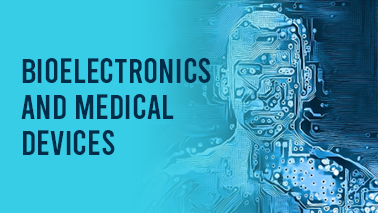
Bioelectronics offers significant opportunities for medical device applications since it involves the development of technologies that can interact with biological systems. Here are some current developments in bioelectronics for medical devices:
Implantable medical devices: Pacemakers and neurostimulators are examples of bioelectronic implants which are used to monitor and regulate the function of organs and tissues. These devices can treat many types of medical ailments, including heart disease and neurological diseases.
Wearable medical devices: Wearable bioelectronic devices, such as glucose monitors and activity trackers, are used to continuously monitor physiological data. For patients with chronic diseases, these devices provide non-invasive and convenient monitoring.
Smart drug delivery devices: Smart drugs delivery systems, such as insulin pumps and inhalers, are utilized for delivering pharmaceuticals to particular places within the body. These devices can be set up to deliver medications in response to physiological cues like glucose levels or breathing patterns.
Bioelectronic sensors: Electrocardiogram (ECG) and electroencephalogram (EEG) sensors are examples of bioelectronic sensors that are used to detect and monitor physiological signals. These sensors can be included in medical equipment like pacemakers and neurostimulators to provide real-time feedback on organ and tissue function.
Bioelectronic prostheses: Bioelectronic prostheses, such as bionic limbs and cochlear implants, are used to replace or enhance the function of organs and tissues. These prostheses can be controlled using bioelectronic signals, such as muscle contractions or neural activity.
Personalized medicine devices: Bioelectronic devices, such as gene therapy delivery devices and personalized drug screening platforms, can be used to develop personalized medicine devices. This kind of technology can be used to personalize medical treatments for specific individuals based on genetic and physiological factors.
Overall, bioelectronics is enabling the development of new and creative medical gadgets that can interface with biological systems. This field's ongoing research is focused on developing new technologies and applications that can improve the accuracy, efficiency, and safety of bioelectronic medical devices.
Tags
Bioelectronics Conferences 2025 USA
Bioelectronics Conferences 2025 Asia
Bioelectronics Conferences 2025 USA
Bioelectronics Conferences 2025 China
Wearable Biosensors Conferences
Implantable Bioelectronics Conferences
Magneto Elastic Biosensors Conferences
Biosensors Conferences 2025 Japan
Biosensing Annual Conferences 2025
Biosensors Conferences 2025 China
Chemical Sensors and Biosensors Conferences
Switchable Bioelectronics Conferences
Advances in Biosensors Conferences
Biosensors Conferences 2025
Wearable Bioelectronics Conferences
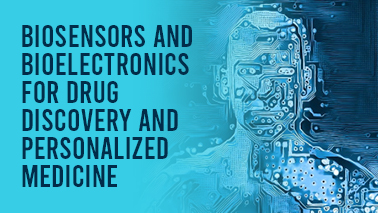
Biosensors and bioelectronics are transforming drug discovery and customized medicine by allowing real-time monitoring of therapeutic efficacy and patient response. Some recent breakthroughs in biosensors and bioelectronics for drug discovery and customized medicine are as follows:
Real-time monitoring of drug efficacy: Biosensors can be used to evaluate drug efficacy in real-time by detecting changes in biomarkers associated with the target disease or condition. This approach can accelerate drug discovery by permitting researchers to identify quickly and effective drug candidates.
Personalized drug screening: Biosensors can be used to develop personalized drug screening scaffolds that can identify drugs that are most effective for individual patients based on their genetic and physiological features.
Point-of-care diagnostics: Biosensors can be used to develop point-of-care diagnostics that can quickly and accurately diagnose diseases and conditions at the patient's bedside. This examine can improve patient outcomes by allowing for fast detection and treatment of diseases.
Drug delivery devices: Bioelectronic drug delivery devices can be predetermined to release drugs in response to physiological cues, such as glucose levels or breathing patterns. These devices can be used to deliver drugs at the modified dose and timing, leads to improve drug efficacy and reduces the side effects.
Wearable biosensors: Wearable biosensors can monitor patient’s physiological parameters, such as heart rate and blood pressure, in real-time. This approach can provide physicians with valuable data on patients response to treatment, leading to improved outcomes and personalized medicine.
Bioelectronics for gene therapy: Bioelectronics can be used to develop gene therapy delivery devices that can precisely control the timing and location of gene therapy delivery. This approach can increase the efficacy and safety of gene therapy, leading to improved patient outcomes.
Overall, biosensors and bioelectronics are transforming drug discovery and personalized medicine by providing new and innovative solutions for real-time monitoring of drug efficacy and patient response. Ongoing research in this field is focused on developing new methods and applications that can improve the accuracy, efficacy, and safety of biosensors and bioelectronic devices for drug discovery and personalized medicine.
Tags
Bioelectronics Conferences 2025 China
Wearable Bioelectronics Conferences
Biosensor Technology Conferences
Chemical Sensors and Biosensors Conferences
Magneto Elastic Biosensors Conferences
Bioelectronics Conferences 2025 Europe
Biosensors Conferences 2025
Biosensors Conferences 2025 USA
Biosensors Conferences 2025
Biosensors Conferences 2025 Middle East
Biosensors Conferences
Electrochemical Biosensors Conferences
Optical Biosensors Conferences
Bioelectronics Conferences 2025 USA
Bioelectronics Conferences 2025 Asia
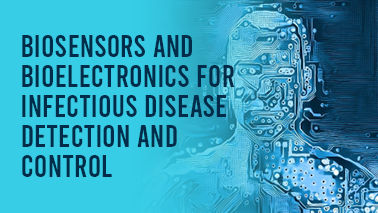
Biosensors and bioelectronics have significant potential for infectious disease detection and control as they provide rapid and sensitive pathogen detection as well as real-time illness progression monitoring. Some recent developments in biosensors and bioelectronics for infectious disease diagnosis and control are as follows:
Point-of-care diagnostics: Biosensors can be utilized to develop point-of-care diagnostics that can diagnose infectious diseases quickly and effectively at the patient's bedside. This method may improve patient outcomes by allowing for early disease detection and treatment.
Wearable biosensors: Wearable biosensors are able to track patient’s health parameters in real time, such as body temperature and heart rate. This method can offer doctors with significant data on disease development and therapy response, resulting in improved outcomes and personalized medication.
Pathogen detection: Biosensors have a high sensitivity and specificity for the detection of pathogens, such as viruses and bacteria, in clinical samples like blood and saliva. By facilitating early diagnosis and management of infectious diseases, transmission can be reduced and patient outcomes can be improved.
Real-time monitoring of disease progression: Biosensors can be used to determine changes in biomarkers linked with disease progression in real-time. This technique can give physicians with helpful information on illness severity and therapy response, leading to better outcomes and individualized medication.
Bioelectronic disinfection devices: Bioelectronic disinfection devices, such as ultraviolet (UV) light-emitting devices and plasma-based devices, can be used to disinfect surfaces and air, which results to reduce infectious disease transmission.
Bioelectronic vaccine delivery devices: These systems can be programmed to provide vaccines at the right time and dose, improves vaccine effectiveness and minimizing side effects.
Overall, biosensors and bioelectronics have the potential to revolutionize the diagnosis and management of infectious diseases by providing sensitive and quick pathogen detection as well as real-time disease progression monitoring. The objective of ongoing research in this field is to create new technologies and applications that will improve the accuracy, effectiveness, and safety of biosensors and bioelectronic devices for the detection and management of infectious diseases.
Tags
Bioelectronics Conferences 2025 USA
Bioelectronics Conferences 2025 Asia
Bioelectronics Conferences 2025 Canada
Biosensors Conferences 2025 Middle East
Bioelectronics Conferences 2025 China
Bioelectronics Conferences 2025 USA
Biosensing Annual Conferences 2025
Chemical Sensors and Biosensors Conferences
Biosensors Conferences 2025 China
Biosensors Conferences 2025 USA
Biosensors Conferences 2025 Japan
Nanobiosensors Conferences
Bioelectronics Conferences 2025 Europe
Wearable Biosensors Conferences
Wearable Bioelectronics Conferences
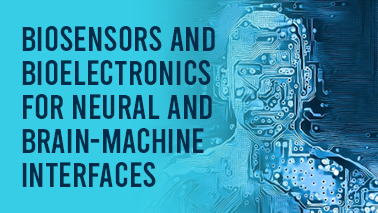
Biosensors and bioelectronics provide huge potential for neural and brain-machine interfaces through providing real-time monitoring of brain activity and communication with external equipment. Some recent developments in biosensors and bioelectronics for neural and brain-machine interfaces are as follows:
Neural monitoring: Biosensors can be used to detect changes in biomarkers linked with brain function and so monitor neural activity in real time. This method can provide vital data on brain function to researchers and doctors, leading to a better understanding and treatment of neurological disorders.
Brain-machine interfaces: Bioelectronic devices can be used to connect the brain to external devices like prosthetics and computers. This technique can improve the quality of life for people with neurological diseases or difficulties by restoring lost function and permitting them to live independently.
Wearable biosensors: Wearable biosensors can track changes in brain function in response to various stimuli or treatments in real time.
Optogenetics: Optogenetics is a technique in which light is used to influence the activity of neurons in the brain. Bioelectronic devices may provide a beam of light to specific brain regions, allowing for precise control of neural activity and communication with external devices.
Brain stimulation: Bioelectronic devices can be used to stimulate specific areas of the brain, improving brain function and treating neurological conditions including depression and epilepsy.
Neuromorphic computing: Neuromorphic computing includes the creation of computer systems that mirror the structure and function of the human brain. Bioelectronics can be utilized to create neuromorphic computing systems that process information similarly to the brain, resulting in better performance and energy efficiency.
Overall, biosensors and bioelectronics have revolutionized neural and brain-machine interfaces by enabling real-time monitoring of brain activity and communication with external equipment. Ongoing research in this field is focused on generating new technologies and applications that can improve the accuracy, efficacy, and efficiency of existing technology.
Tags
Bioelectronics Conferences 2025 Europe
Wearable Bioelectronics Conferences
Biosensors Conferences
Biosensors Conferences 2025 Japan
Optical Biosensors Conferences
Chemical Sensors and Biosensors Conferences
Biosensors Conferences 2025
Bioelectronics Conferences 2025 Canada
Switchable Bioelectronics Conferences
Advances in Biosensors Conferences
Bioelectronics Conferences 2025 USA
Bioelectronics Conferences 2025 USA
Biosensors Conferences 2025 China
Magneto Elastic Biosensors Conferences
Biosensors Conferences 2025 Middle East
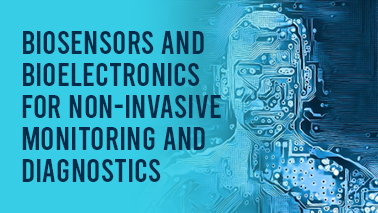
Biosensors and bioelectronics have significant potential for non-invasive monitoring and diagnostics by providing new and innovative methods for identifying diseases and monitoring. Here are some recent developments in non-invasive monitoring and diagnostic biosensors and bioelectronics:
Wearable biosensors: Wearable biosensors may measure physiological data in real time, such as heart rate, blood pressure, and glucose levels, allowing people to track their health and discover early indicators of diseases or disorders.
Breath analysis: Bioelectronic devices can be used to evaluate the composition of exhaled breath, facilitating the detection of volatile organic compounds (VOCs) associated with diseases such as lung cancer and asthma.
Saliva analysis: Biosensors can be used to analyze saliva for the presence of biomarkers that indicate the presence of diseases or disorders such as infectious diseases and oral cancer.
Tear analysis: Biosensors can be utilized to analyze tears for the presence of biomarkers that indicate the presence of diseases or disorders such glaucoma and dry eye syndrome.
Skin analysis: Bioelectronic devices can be used to analyze skin composition, allowing for the detection of biomarkers suggestive of diseases or disorders such as skin cancer and dermatitis.
Imaging technologies: Bioelectronic devices can be used in combination with imaging technologies like as magnetic resonance imaging (MRI) and computed tomography (CT) to improve non-invasive diagnostic accuracy and sensitivity.
Overall, biosensors and bioelectronics are transforming non-invasive monitoring and diagnostics by providing new and innovative technologies for disease detection and monitoring. Ongoing research in the field is focused on developing new technologies and applications to improve the accuracy, efficacy, and safety of biosensors and bioelectronic devices used for non-invasive monitoring and diagnostics.
Tags
Biosensors Conferences 2025
Biosensors Conferences 2025 Japan
Biosensors Conferences 2025 USA
Implantable Bioelectronics Conferences
Biosensors Conferences 2025
Electrochemical Biosensors Conferences
Bioelectronics Conferences 2025 Asia
Biosensors Conferences 2025 China
Biosensing Annual Conferences 2025
Biosensor Technology Conferences
Biosensors Conferences
Wearable Bioelectronics Conferences
Bioelectronics Conferences 2025
Biosensors Conferences 2025 Middle East
Magneto Elastic Biosensors Conferences
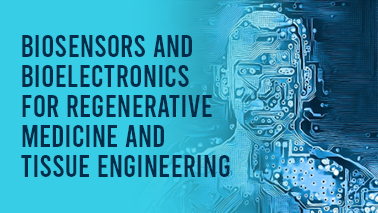
Biosensors and bioelectronics have huge potential for regenerative medicine and tissue engineering because they offer new and innovative methods for monitoring and controlling cellular behavior and tissue growth. Here are some recent biosensors and bioelectronic advancements for regenerative medicine and tissue engineering:
Electrospinning: Electrospinning is a technology that uses a high voltage to generate nanofibers that can be utilized as scaffolds for tissue engineering. Bioelectronic devices can be placed in these nanofibers to monitor cell and tissue growth and development.
Bioelectric stimulation: Bioelectronic devices can be utilized to stimulate cells and tissues, resulting in better cellular performance and tissue regeneration. This method can be used to enhance wound healing, the formation of new blood vessels, and the regeneration of damaged tissues.
Biosensors for monitoring cellular behavior: Biosensors can be used to track fluctuations in cellular function and response to different stimuli or treatments in real-time, allowing researchers and clinicians to track changes in cellular function and response to different stimuli or therapies. This method will provide useful information for tissue engineering and regenerative medicine.
Implantable biosensors: Implantable biosensors can be used to monitor the growth and development of tissues in vivo, providing researchers and clinicians with valuable data on tissue regeneration and healing.
Smart materials: Smart materials can be utilized as platforms for tissue engineering, such as hydrogels and shape-memory polymers. These smart materials can contain bioelectronic devices to monitor and control cellular behavior and tissue formation.
Overall, biosensors and bioelectronics are revolutionizing regenerative medicine and tissue engineering by providing new methods for monitoring and controlling cellular behavior and tissue growth. Current research in this subject is aimed at developing new technologies and applications that can increase the accuracy, efficacy, and safety of biosensors and bioelectronic devices used in regenerative medicine and tissue engineering.
Tags
Wearable Bioelectronics Conferences
Biosensors Conferences 2025 Japan
Nanobiosensors Conferences
Biosensors Conferences 2025
Biosensing Meetings
Bioelectronics Conferences 2025 Asia
Bioelectronics Conferences 2025 Europe
Bioelectronics Conferences 2025
Bioelectronics Conferences 2025 USA
Wearable Biosensors Conferences
Biosensors Conferences 2025 China
Biosensors Conferences
Biosensor Technology Conferences
Biosensors Conferences 2025
Optical Biosensors Conferences
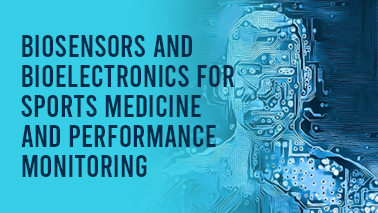
Biosensors and bioelectronics have huge potential in sports medicine and performance monitoring because they provide new and innovative methods for monitoring and recording physiological data during exercise and training. Here are some recent biosensors and bioelectronic advancements for sports medicine and performance monitoring:
Wearable biosensors: Wearable biosensors can monitor physiological parameters such as heart rate, blood pressure, oxygen saturation, and body temperature during exercise and training in real-time, allowing athletes and coaches to track their performance and adjust their training regimen accordingly.
Muscle activity monitoring: During exercise and training, bioelectronic devices can be used to monitor muscle activity, providing valuable information on muscle fatigue, activation patterns, and strength.
Bioimpedance analysis: Bioelectronic devices can be used to measure bioimpedance, which is a measure of the electrical characteristics of tissues in the body. During exercise and training, this method can be used to measure body composition, hydration levels, and muscle mass.
Brain activity monitoring: Bioelectronic devices can be used to track brain activity during exercise and training, providing crucial insights into the cognitive and emotional components of sports performance.
Injury prevention: Biosensors can be used to analyze the risk of injury during exercise and training by tracking the movement patterns and biomechanics of athletes. This method can be used to identify areas of weakness or imbalance that may lead to injury.
Overall, biosensors and bioelectronics are transforming sports medicine and performance monitoring by offering new and innovative solutions for the monitoring and tracking of physiological parameters during exercise and training. Ongoing research in this field is focused on developing new technologies and applications that can improve the accuracy, efficacy, and safety of biosensors and bioelectronic devices for sports medicine and performance monitoring.
Tags
Biosensors Conferences 2025 China
Biosensor Technology Conferences
Biosensing Annual Conferences 2025
Bioelectronics Conferences 2025 Canada
Bioelectronics Conferences 2025 USA
Wearable Bioelectronics Conferences
Biosensors Conferences 2025
Biosensors Conferences 2025 USA
Biosensors Conferences 2025 Japan
Bioelectronics Conferences 2025 Asia
Switchable Bioelectronics Conferences
Advances in Biosensors Conferences
Wearable Biosensors Conferences
Bioelectronics Conferences 2025 USA
Biosensing Meetings
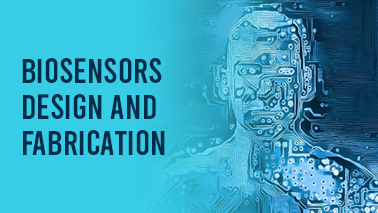
Biosensors are analytical devices that transform biological responses into measurable signals. They typically consist of a biological sensing element, such as an enzyme or antibody, and a transducer that converts the biological response into an electrical or optical signal. The design and fabrication of biosensors involve several key steps:
Selection of the biological sensing element: The choice of the biological sensing element is crucial to the performance of the biosensor. The sensing element must be specific to the target analyte and exhibit a strong binding affinity.
Transducer design: A transducer is a component that translates a biological response into an electrical or optical signal. The type of transducer used is determined by the type of biological response being monitored as well as the desired signal output.
Surface modification: Surface modification is the procedure by which the biological sensing element is normally fixed on the surface of the transducer. This procedure involves the functioning of the transducer surface with a linker molecule that permits the sensing element to be attached.
Signal amplification: The signal generated by the biosensor may be weak, requiring amplification. This can be accomplished through various means, including enzyme amplification or the use of nanomaterials.
Integration and packaging: Once the biosensor has been designed and fabricated, it must be integrated with the necessary electronics and packaging in order to create a functional device. This may involve the use of microfabrication techniques to create microfluidic channels or other components.
Overall, the design and fabrication of biosensors require careful consideration of the biological sensing element, the transducer design, surface modification, signal amplification, and integration and packaging. The choice of materials and fabrication methods will depend on the specific application of the biosensor, and ongoing research in this field is focused on developing new technologies and methods to improve the sensitivity, specificity, and performance of biosensors.
Tags
Bioelectronics Conferences 2025
Biosensors Conferences 2025 Middle East
Biosensors Conferences 2025
Implantable Bioelectronics Conferences
Biosensing Annual Conferences 2025
Switchable Bioelectronics Conferences
Bioelectronics Conferences 2025 China
Biosensors Conferences
Biosensors Conferences 2025 USA
Chemical Sensors and Biosensors Conferences
Electrochemical Biosensors Conferences
Bioelectronics Conferences 2025 USA
Advances in Biosensors Conferences
Bioelectronics Conferences 2025 Canada
Bioelectronics Conferences 2025 Europe
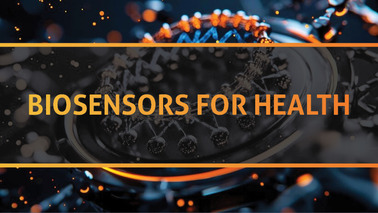
Biosensors are analytical instruments that are capable of detecting and measuring biological or chemical analytes in wide range of applications. Biosensors have enormous potential for applications in health, the environment, and biosecurity where rapid, sensitive, and accurate detection of target analytes is required. Here are some examples of biosensors used in medicine, the environment, and biosecurity:
Health applications: Biosensors have been widely utilized in clinical diagnostics to identify diseases such as cancer, viral infections, and genetic disorders. They are also used to monitor glucose, cholesterol, and other metabolites in chronically ill patients.
Environmental applications: Biosensors are used to detect pollutants such as heavy metals, pesticides, and organic chemicals in the environment. They can also be used to identify dangerous algal blooms and monitor water quality.
Biosecurity applications: Biosensors have been used in biosecurity applications for the detection of biological agents such as bacteria, viruses, and toxins. They can be used to monitor food and water supplies, as well as air quality in public spaces.
Agriculture applications: In agriculture, biosensors are used to identify diseases and monitor the health of livestock and crops. They can also be used to monitor soil quality and detect hazardous pollutants.
Industrial applications: Biosensors are utilized in a variety of industrial applications, including fermentation, bioreactors, and bioprocessing. They are also used to check food and beverage quality and safety.
Overall, biosensors offer immense promise for applications in health, the environment, and biosecurity, and continuing research in this subject is focused on developing new biosensors with increased sensitivity, specificity, and reliability. New materials, nanotechnology, and downsizing techniques will increase the performance and usability of biosensors for various applications even further.
Tags
Biosensors Conferences 2025
Bioelectronics Conferences 2025 USA
Biosensors Conferences 2025
Bioelectronics Conferences 2025
Bioelectronics Conferences 2025 USA
Advances in Biosensors Conferences
Biosensors Conferences 2025 USA
Switchable Bioelectronics Conferences
Wearable Biosensors Conferences
Magneto Elastic Biosensors Conferences
Biosensors Conferences 2025 Middle East
Electrochemical Biosensors Conferences
Biosensors Conferences 2025 Japan
Bioelectronics Conferences 2025 China
Biosensing Meetings
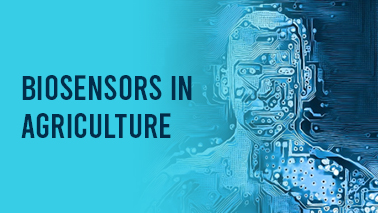
Biosensors are analytical instruments that are capable of detecting and measuring biological or chemical analytes in wide range of applications. Biosensors have enormous potential for applications in health, the environment, and biosecurity where rapid, sensitive, and accurate detection of target analytes is required. Here are some examples of biosensors used in medicine, the environment, and biosecurity:
Health applications: Biosensors have been widely utilized in clinical diagnostics to identify diseases such as cancer, viral infections, and genetic disorders. They are also used to monitor glucose, cholesterol, and other metabolites in chronically ill patients.
Environmental applications: Biosensors are used to detect pollutants such as heavy metals, pesticides, and organic chemicals in the environment. They can also be used to identify dangerous algal blooms and monitor water quality.
Biosecurity applications: Biosensors have been used in biosecurity applications for the detection of biological agents such as bacteria, viruses, and toxins. They can be used to monitor food and water supplies, as well as air quality in public spaces.
Agriculture applications: In agriculture, biosensors are used to identify diseases and monitor the health of livestock and crops. They can also be used to monitor soil quality and detect hazardous pollutants.
Industrial applications: Biosensors are utilized in a variety of industrial applications, including fermentation, bioreactors, and bioprocessing. They are also used to check food and beverage quality and safety.
Overall, biosensors offer immense promise for applications in health, the environment, and biosecurity, and continuing research in this subject is focused on developing new biosensors with increased sensitivity, specificity, and reliability. New materials, nanotechnology, and downsizing techniques will increase the performance and usability of biosensors for various applications even further.
Tags
Bioelectronics Conferences 2025 USA
Biosensors Conferences 2025 Japan
Wearable Biosensors Conferences
Biosensor Technology Conferences
Bioelectronics Conferences 2025 USA
Electrochemical Biosensors Conferences
Biosensors Conferences 2025
Magneto Elastic Biosensors Conferences
Bioelectronics Conferences 2025 Asia
Biosensors Conferences 2025
Implantable Bioelectronics Conferences
Nanobiosensors Conferences
Biosensors Conferences
Optical Biosensors Conferences
Switchable Bioelectronics Conferences
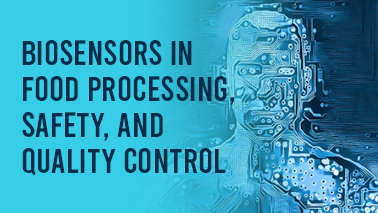
Biosensors provide huge potential in the food business for assuring product safety and quality. Following are some applications of biosensors in food processing, safety, and quality control.
Pathogen detection: Biosensors can detect the presence of pathogens such as bacteria, viruses, and parasites in food. Biosensors, for example, have been created to detect Salmonella, E. coli, Listeria, and other foodborne pathogens.
Allergen detection: Biosensors are capable of detecting allergens in food products. Biosensors, for example, have been created to detect peanuts, soy, wheat, and other common allergens..
Quality control: Biosensors can also be used for quality control in the food industry. For example, biosensors have been improved to detect the existence of antibiotics, hormones, and other contaminants in meat and dairy products.
Shelf life monitoring: Biosensors can monitor the quality and freshness of food products by detecting the levels of volatile organic compounds (VOCs) and other biomolecules. For example, biosensors have been developed to detect the rotting of meat and fish products.
Traceability: Biosensors can be used for the traceability of food products, allowing for the identification of the origin of the product and the tracking of its movement through the supply chain.
Overall, biosensors have enormous potential in food processing, safety, and quality control. The development of new biosensors with high sensitivity, specificity, and reliability will further improve their usefulness in the food industry.
Tags
Biosensing Annual Conferences 2025
Bioelectronics Conferences 2025 Asia
Optical Biosensors Conferences
Biosensors Conferences 2025 USA
Bioelectronics Conferences 2025 Europe
Biosensors Conferences
Advances in Biosensors Conferences
Bioelectronics Conferences 2025
Magneto Elastic Biosensors Conferences
Biosensors Conferences 2025
Bioelectronics Conferences 2025 Canada
Biosensors Conferences 2025
Nanobiosensors Conferences
Chemical Sensors and Biosensors Conferences
Bioelectronics Conferences 2025 China
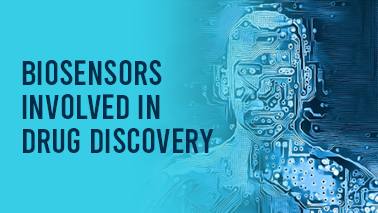
Biosensors play a crucial role in drug discovery because they provide a quick, sensitive, and cost-effective method of monitoring the activity of medicines and their target molecules. Here are some examples of biosensors used in drug development:
Enzyme assays: Biosensors can be used to evaluate the activity of enzymes involved in drug metabolism and other physiological activities, such as enzyme assays. For example, biosensors have been developed for the measurement of kinases, proteases, and phosphatases.
Ligand-receptor interactions: Biosensors can be used to measure drug binding affinity to target receptors. For example, Biosensors have been created to measure G-protein-coupled receptors (GPCRs) and ion channels.
Cell-based assays: Biosensors can be used to evaluate the activity of cells in response to medicines in cell-based experiments. Biosensors, for example, have been created to measure intracellular calcium levels, cAMP levels, and other signaling chemicals.
Protein-protein interactions: Biosensors can be used to assess the interactions of proteins that are therapeutic targets. Biosensors, for example, have been designed to assess protein-protein interactions including transcription factors, receptors, and enzymes.
Label-free assays: Biosensors can be used to measure the activity of drugs without the need for labels or other chemical modifications. For example, biosensors have been developed for the measurement of DNA and RNA interactions.
Overall, biosensors have huge potential in drug discovery because they provide a quick and low-cost method of evaluating the activity of medicines and their target molecules. The development of new biosensors with increased sensitivity, specificity, and reliability will enhance their utility in drug discovery.
Tags
Advances in Biosensors Conferences
Biosensors Conferences 2025 USA
Biosensors Conferences 2025 Japan
Wearable Biosensors Conferences
Magneto Elastic Biosensors Conferences
Biosensors Conferences 2025
Biosensors Conferences
Implantable Bioelectronics Conferences
Biosensor Technology Conferences
Optical Biosensors Conferences
Wearable Bioelectronics Conferences
Bioelectronics Conferences 2025 China
Electrochemical Biosensors Conferences
Biosensing Annual Conferences 2025
Biosensors Conferences 2025
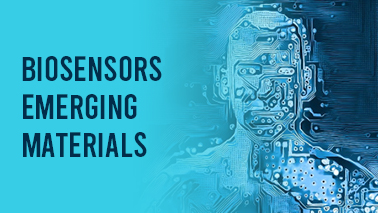
Biosensors depend on the qualities of their materials to detect and respond to target analytes, Emerging materials with novel characteristics have the potential to increase biosensor sensitivity, selectivity, and stability. Here are some examples of developing biosensor materials:
Graphene: Graphene is a two-dimensional material with high electrical conductivity and surface area, making it an ideal candidate for biosensors. Graphene-based biosensors have been developed for the detection of various analytes, including DNA, proteins, and neurotransmitters.
Nanoparticles: Nanoparticles having unique optical and electrical properties, like gold nanoparticles and quantum dots, are perfect for biosensors. Nanoparticle-based biosensors have been created to detect analytes such as DNA, proteins, and glucose.
Metal-organic frameworks (MOFs): MOFs are a class of porous material that can be functionalized using various ligands to selectively bind to different analytes. MOF-based biosensors for the detection of various gases and biomolecules have been created.
Carbon nanotubes (CNTs): Carbon nanotubes (CNTs) are one-dimensional materials with outstanding electrical conductivity and surface area that are perfect for biosensors. CNT-based biosensors have been designed to detect a wide range of analytes such as glucose, DNA, and neurotransmitters.
2D materials: Other two-dimensional materials, such as transition metal dichalcogenides (TMDs) and black phosphorus, have unique electronic and optical properties that make them promising for biosensors.
Overall, these new materials have the potential to transform biosensor technology by increasing sensitivity, selectivity, and stability. More research and development in the field of biosensor materials is needed to achieve their full potential in a variety of applications.
Tags
Biosensor Technology Conferences
Switchable Bioelectronics Conferences
Bioelectronics Conferences 2025
Biosensors Conferences 2025
Optical Biosensors Conferences
Biosensors Conferences 2025 China
Advances in Biosensors Conferences
Biosensors Conferences 2025 Japan
Wearable Bioelectronics Conferences
Chemical Sensors and Biosensors Conferences
Magneto Elastic Biosensors Conferences
Implantable Bioelectronics Conferences
Biosensors Conferences
Bioelectronics Conferences 2025 Canada
Bioelectronics Conferences 2025 China
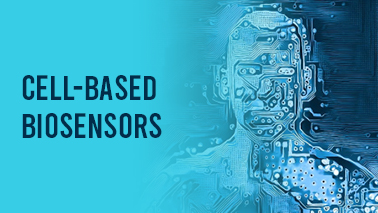
Cell-based biosensors are biosensors that use living cells as the biorecognition factor to identify a target analyte and determine whether it is present or active. These biosensors are based on cells' capacity to react to alterations in their surroundings by altering their metabolic activity or by expressing particular genes or proteins.
Cell-based biosensors can be classified into two main categories: whole-cell biosensors and cell-free biosensors. Cell-free biosensors use cell extracts or purified proteins, whereas whole-cell biosensors use complete living cells as the biorecognition component.
Whole-cell biosensors are further categorized based on the type of biological response detected, such as pH changes, oxygen consumption, or cell electrical characteristics. Whole-cell biosensors include the following:
Microbial biosensors: These biosensors use bacteria or yeast cells that have been genetically engineered to produce a detectable signal in response to specific analytes, such as light or fluorescence.
Enzyme-based biosensors: These biosensors are made up of cells that manufacture or express enzymes that catalyze a reaction with the target analyte, producing a detectable signal.
Ion channel-based biosensors: Ion channel-based biosensors use cells that produce ion channels that respond to changes in the concentration of certain ions, such as potassium or calcium ions.
However, cell-free biosensors make use of purified proteins or cell extracts that can bind to or initiate a reaction with the target analyte. Cell-free biosensors include, for example:
Immunosensors: These biosensors bind selectively to the target analyte using pure antibodies or antibody fragments, producing a detectable signal.
Enzyme-linked biosensors: These biosensors use purified enzymes that catalyze a reaction with the target analyte, resulting in a measurable signal.
Applications for cell-based biosensors include environmental monitoring, drug development, and clinical diagnostics. However, maintaining cell viability and function over time, as well as the requirement for specific tools and knowledge, are the key difficulties connected with the use of cell-based biosensors.
Tags
Bioelectronics Conferences 2025 Canada
Wearable Bioelectronics Conferences
Biosensors Conferences
Biosensors Conferences 2025 Japan
Bioelectronics Conferences 2025 China
Implantable Bioelectronics Conferences
Advances in Biosensors Conferences
Electrochemical Biosensors Conferences
Bioelectronics Conferences 2025 USA
Chemical Sensors and Biosensors Conferences
Biosensors Conferences 2025
Wearable Biosensors Conferences
Biosensor Technology Conferences
Magneto Elastic Biosensors Conferences
Biosensors Conferences 2025 USA
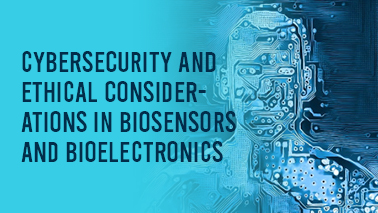
Cybersecurity and ethical considerations are essential parts of biosensor and bioelectronics research and application. Here are some of the major concerns:
Cybersecurity: Due to their greater connectivity to the internet and other networks, biosensors and bioelectronics are more susceptible to cyberattacks. These assaults might damage the reliability of the information gathered, resulting in misleading readings and incorrect diagnoses. To prevent unwanted access to these devices, cybersecurity standards like encryption and authentication are needed to be established.
Data privacy: Biosensors and bioelectronics gather private information about people, such as their health and medical history. Individuals must be given control over how their data is gathered, used, and shared, and this data must be shielded from illegal access.
Informed consent: Before approving the use of biosensors and bioelectronics, patients and individuals must be fully informed about their use, including the risks and advantages. For the collection, use, and sharing of data, informed consent should be acquired.
Bias and discrimination: Using biosensors and bioelectronics, especially in healthcare contexts, carries a risk of bias and discrimination. These devices' gather data has to be evaluated and applied without discriminating against people based on their race, gender, or other traits.
Sustainability: Rare and expensive resources, like as lithium-ion batteries and rare earth metals, are needed for biosensors and bioelectronics. These technologies must be created and used in a manner that is sustainable and does not harm the environment.
In conclusion, ethical and cybersecurity issues are crucial for the creation and application of biosensors and bioelectronics. The preservation of individual privacy, informed consent, and the avoidance of bias and discrimination should be given top priority in ongoing research and development. Sustainability should also be considered in the development and manufacture of these devices.
Tags
Biosensors Conferences 2025 Middle East
Electrochemical Biosensors Conferences
Bioelectronics Conferences 2025 Canada
Wearable Bioelectronics Conferences
Magneto Elastic Biosensors Conferences
Bioelectronics Conferences 2025 USA
Bioelectronics Conferences 2025 USA
Bioelectronics Conferences 2025 Europe
Biosensing Annual Conferences 2025
Biosensors Conferences 2025
Bioelectronics Conferences 2025 Asia
Bioelectronics Conferences 2025
Biosensors Conferences 2025 China
Biosensing Meetings
Advances in Biosensors Conferences
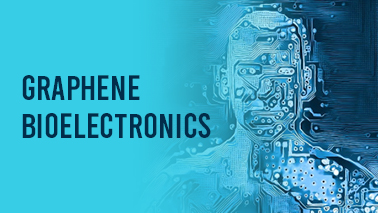
Graphene bioelectronics is a new field that blends graphene's unique features with biological systems for a variety of applications. Graphene is a two-dimensional substance composed of a single layer of hexagonally organized carbon atoms. Because of its strong mechanical, electrical, and optical capabilities, it is a potential material for a variety of biosensing applications.
Graphene bioelectronics is involved in the creation of biosensors for medical and environmental purposes. Graphene-based biosensors with excellent sensitivity and selectivity have been developed for the detection of various analytes such as glucose, cholesterol, and DNA. Graphene's large surface area, excellent electrical conductivity, and ability to support biological molecules make it an ideal platform for the development of biosensors.
Graphene bioelectronics can potentially be used to create implantable devices including neural implants, biosensors, and medication delivery systems. The biocompatibility, flexibility, and electrical signal conductivity of graphene make it an appealing material for implantable devices that interact with biological systems.
Furthermore, graphene-based materials can be employed as scaffolds for tissue engineering and regeneration, promoting the development and differentiation of numerous cell types. Graphene's features can also be exploited to improve the mechanical properties of various biomaterials, such as hydrogels, allowing for the production of more robust and flexible biomaterials.
In conclusion, graphene bioelectronics is an interesting and fast evolving topic with huge potential for biosensing, implantable devices, tissue engineering, and other fields of bioengineering. Further research and development will be required as the area advances to optimize the properties and applications of graphene-based materials for biological systems.
Tags
Biosensors Conferences
Chemical Sensors and Biosensors Conferences
Implantable Bioelectronics Conferences
Bioelectronics Conferences 2025 China
Biosensing Annual Conferences 2025
Wearable Biosensors Conferences
Biosensors Conferences 2025 China
Biosensing Meetings
Advances in Biosensors Conferences
Bioelectronics Conferences 2025 USA
Switchable Bioelectronics Conferences
Magneto Elastic Biosensors Conferences
Bioelectronics Conferences 2025 Canada
Bioelectronics Conferences 2025
Biosensor Technology Conferences
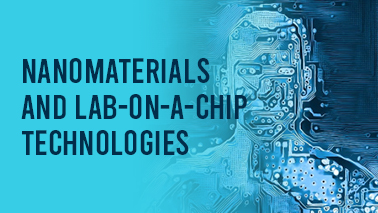
Integrating nanomaterials and lab-on-a-chip (LOC) technologies can revolutionize biosensors and bioelectronics, enabling rapid, sensitive, and portable diagnostics for earlier disease detection and improved healthcare.
Nanomaterials possess unique properties ideal for biosensors:
Their small size and high surface area offer high sensitivity and specificity.
They can be used as sensors or platforms for detecting biomolecules.
LOC miniaturizes and integrates lab functions onto a microchip advantages:
Include reduced sample volume,
Faster turnaround time,
Lower reagent use, and increased portability.
LOC applications:
Include point-of-care diagnostics,
Environmental monitoring, and drug development.
Combining nanomaterials and LOC technologies amplifies their benefits.
This creates highly sensitive and specific biosensors for detecting disease biomarkers with unprecedented accuracy.
In conclusion, the integration of nanomaterials and LOC technologies represents a transformative force in the field of biosensors and bioelectronics, holding immense potential to revolutionize healthcare. These advancements pave the way for earlier disease detection, improved patient outcomes, and enhanced medical interventions, leading to a healthier and more equitable future for all
Tags
Wearable Biosensors Conferences
Electrochemical Biosensors Conferences
Bioelectronics Conferences 2025 USA
Advances in Biosensors Conferences
Biosensing Meetings
Bioelectronics Conferences 2025
Biosensors Conferences 2025 China
Chemical Sensors and Biosensors Conferences
Optical Biosensors Conferences
Bioelectronics Conferences 2025 Asia
Biosensors Conferences 2025
Bioelectronics Conferences 2025 Europe
Bioelectronics Conferences 2025 China
Biosensor Technology Conferences
Biosensors Conferences 2025 Middle East
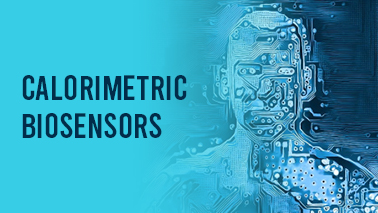
Calorimetric biosensors are one kind of biosensor that use heat produced or absorbed during a biological reaction to detect analytes. A bioreceptor, such as an enzyme or an antibody, is usually mounted on a thermally sensitive transducer, such as a microcalorimeter or a thermistor, in these biosensors. A heat change that results from the bioreceptor attaching to the target analyte is detected by the transducer and transformed into an electrical signal. High sensitivity, selectivity, and the capacity to identify both small compounds and macromolecules are just a few benefits of calorimetric biosensors.
There are several types of calorimetric biosensors, including: -
Isothermal calorimetry: Isothermal calorimetry measures the heat produced or absorbed during a biological reaction while the environment is isothermal. It is used to evaluate the binding affinity and stoichiometry of biomolecular interactions as well as the thermodynamics and kinetics of biological reactions.
Differential scanning calorimetry (DSC): As the temperature of a sample and a reference material changes, the amount of heat needed to maintain each temperature is measured. Proteins and other macromolecules' heat stability and structural changes are examined using this method.
Microcalorimetry: Microcalorimetry is the measurement of heat created or absorbed by small samples, often on the scale of microliters. This approach is utilized for studying cell metabolism, as well as the activity and stability of enzymes and other proteins.
Calorimetric biosensors can be used for a variety of purposes, including drug discovery, food analysis, environmental monitoring, and clinical diagnostics. They are especially effective in applications requiring great sensitivity and selectivity, such as biomarker identification for illness diagnosis and monitoring. The fundamental drawback of calorimetric biosensors, however, is their high cost and complexity, which limits their application in field and point-of-care settings.
Tags
Bioelectronics Conferences 2025 Canada
Implantable Bioelectronics Conferences
Switchable Bioelectronics Conferences
Bioelectronics Conferences 2025
Wearable Biosensors Conferences
Bioelectronics Conferences 2025 China
Bioelectronics Conferences 2025 Europe
Advances in Biosensors Conferences
Biosensors Conferences 2025 Japan
Optical Biosensors Conferences
Biosensors Conferences 2025
Biosensing Meetings
Biosensors Conferences 2025
Bioelectronics Conferences 2025 USA
Chemical Sensors and Biosensors Conferences
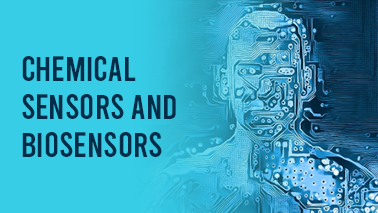
Chemical sensors and biosensors are different types of analytical tools used to find and quantify the presence and quantity of different chemical species in a sample. While both types of sensors operate on the same basic principles of detection and measurement, there are several key differences between them.
Chemical sensors are used to identify and measure the quantity of particular chemical species present in a sample. Typically, a transducer is used in these sensors to transform a chemical signal into an electrical signal that can then be measured and examined. Chemical sensors can be categorized as electrochemical, optical, or thermal sensors depending on the type of transducer they use.
On the other hand, a biological component is used as the recognition element in biosensors, a type of chemical sensor. This biological element, which could be an enzyme, an antibody, or an entire cell, attaches to the target analyte with precision and generates a quantifiable signal. The target analyte's concentration is then calculated from the signal after it has been transduced.
Biosensors have a number of advantages over chemical sensors, such as increased selectivity and sensitivity as well as the capacity to detect analytes that may not be detected by other techniques. Additionally, a variety of applications, including clinical diagnostics, environmental monitoring, and food safety, are increasingly using biosensors.
However, there are some major limits to biosensors, such as the requirement for specialized equipment and experience, as well as the possibility of interference from other components in the sample. Furthermore, the biological component of biosensors might degrade over time, resulting in decreased sensitivity and accuracy.
Overall, chemical sensors and biosensors plays crucial roles in the detection and measurement of chemical species in a wide range of applications, and developments in these technologies are driving innovation in many of fields.
Tags
Bioelectronics Conferences 2025 USA
Bioelectronics Conferences 2025 Canada
Biosensors Conferences 2025
Bioelectronics Conferences 2025 USA
Bioelectronics Conferences 2025 Europe
Nanobiosensors Conferences
Electrochemical Biosensors Conferences
Switchable Bioelectronics Conferences
Implantable Bioelectronics Conferences
Advances in Biosensors Conferences
Biosensors Conferences 2025 Middle East
Biosensors Conferences 2025
Biosensor Technology Conferences
Optical Biosensors Conferences
Biosensing Annual Conferences 2025
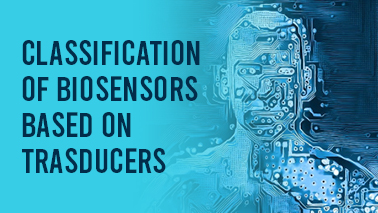
Biosensors can be classified based on the type of transducer used to convert the biological signal into a measurable signal. Some common types of transducers used in biosensors include:
Optical transducers: These biosensors transform a biological signal from a quantifiable signal using light as the transduction medium. Surface plasmon resonance (SPR) biosensors and fluorescence-based biosensors are two types of optical biosensors.
Electrochemical transducers: Electrochemical biosensors uses electrodes to recognize and quantify alterations in the electrical characteristics of a biological sample. Potentiometric, amperometric, and impedimetric biosensors are a few types of electrochemical biosensors.
Piezoelectric transducers: Piezoelectric biosensors use crystals that generate an electrical signal when mechanical stress is applied to them. Quartz crystal microbalance (QCM) biosensors are examples of piezoelectric biosensors.
Thermal transducers: Thermal biosensors detect and measure changes in a biological sample by using temperature variations. Thermometric and calorimetric biosensors are examples of thermal biosensors.
Magnetic transducers: Magnetic biosensors detect and measure changes in a biological sample by using variations in magnetic fields. Magnetoresistive and magnetic particle detection biosensors are examples of magnetic biosensors.
Overall, the transducer used in a biosensor is determined by the application and the qualities of the biological material being studied. Each form of transducer has advantages and disadvantages, and researchers are always attempting to create new and creative biosensors that use various transduction methods.
Tags
Nanobiosensors Conferences
Biosensing Annual Conferences 2025
Chemical Sensors and Biosensors Conferences
Wearable Bioelectronics Conferences
Biosensing Meetings
Biosensors Conferences 2025 Japan
Biosensors Conferences 2025 Middle East
Bioelectronics Conferences 2025 USA
Biosensors Conferences
Bioelectronics Conferences 2025 Europe
Bioelectronics Conferences 2025 China
Bioelectronics Conferences 2025 Asia
Biosensors Conferences 2025
Biosensor Technology Conferences
Bioelectronics Conferences 2025
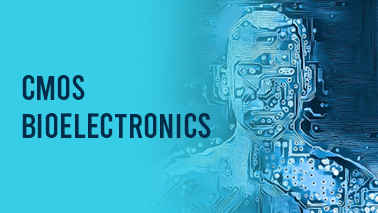
Complementary metal-oxide-semiconductor (CMOS) technology is a form of integrated circuit (IC) technology that is commonly used in the electronics industry. Due to its ability to integrate both digital and analog circuitry on a single chip, CMOS technology has recently gained popularity in the development of bioelectronics devices. CMOS bioelectronics describes the use of CMOS technology to develop devices that can communicate with biological systems.
Employing many components and functions on a single chip to create very portable and compact devices is one of the benefits of adopting CMOS technology for bioelectronics. The great sensitivity and selectivity of CMOS bioelectronics devices enable the precise and accurate detection and measurement of biological signals.
Biosensors, microelectrode arrays, and implantable devices for neural stimulation and recording are examples of CMOS bioelectronics devices. CMOS bioelectronics has also been used in the creation of lab-on-chip systems, which combine multiple functions on a single chip, such as sample preparation, detection, and analysis.
Overall, CMOS bioelectronics has the potential to improve the field of bioelectronics by facilitating the construction of highly advanced and integrated devices for a wide range of applications such as medical diagnostics, drug discovery, and brain research.
Tags
Biosensors Conferences 2025 USA
Nanobiosensors Conferences
Wearable Bioelectronics Conferences
Biosensors Conferences 2025
Bioelectronics Conferences 2025 China
Biosensors Conferences
Biosensors Conferences 2025
Chemical Sensors and Biosensors Conferences
Bioelectronics Conferences 2025 USA
Electrochemical Biosensors Conferences
Bioelectronics Conferences 2025 USA
Optical Biosensors Conferences
Wearable Biosensors Conferences
Bioelectronics Conferences 2025 Canada
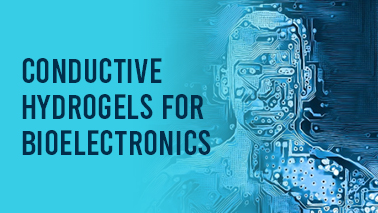
Conductive hydrogels are a type of substance that has received a lot of attention in the field of bioelectronics. These materials are hydrophilic in nature, with a three-dimensional network of crosslinked polymer chains that can hold water. The presence of conductive components within the hydrogel structure, such as carbon nanotubes or graphene, permits them to be electrically conductive.
Conductive hydrogels offer a wide range of applications in bioelectronics, including biosensors, neural interfaces, and drug delivery systems. One of the primary benefits of these materials is their high biocompatibility, which makes them appropriate for usage in biological environments.
Conductive hydrogels have been proven to have strong mechanical properties and to be tailorable in terms of stiffness, porosity, and swelling behavior. Furthermore, by altering the concentration of conductive components inside the hydrogel structure, their conductivity can be modified.
In conclusion, conductive hydrogels are amazing bioelectronic materials because of their biocompatibility, tunable mechanical and electrical properties, and potential applications in a variety of biomedical sectors.
Tags
Biosensors Conferences 2025 USA
Bioelectronics Conferences 2025 Europe
Bioelectronics Conferences 2025 Canada
Wearable Biosensors Conferences
Biosensing Annual Conferences 2025
Advances in Biosensors Conferences
Electrochemical Biosensors Conferences
Bioelectronics Conferences 2025 USA
Biosensors Conferences 2025 Middle East
Switchable Bioelectronics Conferences
Bioelectronics Conferences 2025 USA
Biosensors Conferences 2025 China
Biosensors Conferences 2025 Japan
Wearable Bioelectronics Conferences
Biosensors Conferences 2025
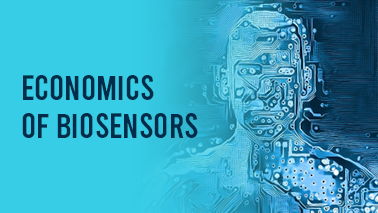
Devices that detect and monitor biological and biochemical processes are known as biosensors. They have numerous uses in fields like as medical diagnostics, environmental monitoring, and food safety. Biosensors can have a large economic impact since they can improve efficiency, low cost, and enable new applications.
In medical diagnostics, biosensors can identify biomarkers associated with diseases such as cancer, diabetes, and heart disease. The use of biosensors may facilitate for the early diagnosis and treatment of diseases, lowering healthcare expenditures and improving patient outcomes. Furthermore, biosensors can be used to monitor patients in real time, giving clinicians with more accurate data and enabling personalized medication.
Biosensors can detect pollutants and toxins in the air, water, and soil during environmental monitoring. This can aid in the identification of potential health dangers, the prevention of environmental damage, and the improvement of public health.
Biosensors can be used in the food industry to detect pathogens and pollutants in food items, improving food safety and decreasing the risk of foodborne illness. Biosensor possesses the potential to significantly impact the food business by lowering the expenses associated with product recalls and legal liability.
The global biosensors market is estimated to expand quickly in the future years, reaching $31.5 billion by 2025. This expansion is being driven by expanding demand for point-of-care diagnostics, rising chronic illness prevalence, and the requirement for speedy and reliable detection of infectious diseases.
In conclusion, biosensors have a large economic impact due to their potential uses in medical diagnostics, environmental monitoring, and food safety. The biosensors market is expected to grow further, because of technological advances and rising need for more efficient and effective diagnostic tools.
Tags
Magneto Elastic Biosensors Conferences
Biosensors Conferences 2025 USA
Bioelectronics Conferences 2025 China
Switchable Bioelectronics Conferences
Bioelectronics Conferences 2025
Biosensing Meetings
Chemical Sensors and Biosensors Conferences
Implantable Bioelectronics Conferences
Biosensors Conferences
Bioelectronics Conferences 2025 Asia
Bioelectronics Conferences 2025 Europe
Biosensing Annual Conferences 2025
Biosensors Conferences 2025
Optical Biosensors Conferences
Electrochemical Biosensors Conferences
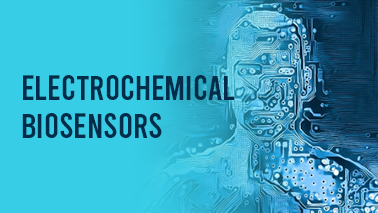
Electrochemical biosensors: A biosensor that converts a biological signal into an electrical signal is known as an electrochemical biosensor. They are made up of a biological recognition element, such as an enzyme or an antibody, and an electrode that detects the signal produced by the recognition element.
Electrochemical biosensors are better than other forms of biosensors in various ways. They are quick, sensitive, and easily miniaturized. They are also inexpensive and may be used in real time, making them suitable for point-of-care testing and in-field applications.
Electrochemical biosensors are classified into three types: Amperometric, Potentiometric, and Impedimetric. Potentiometric biosensors detect the potential difference formed by the reaction between the recognition element and the analyte, whereas amperometric biosensors measure the current produced by the interaction. Impedimetric biosensors evaluate changes in electrode impedance induced by the reaction.
Medical diagnostics, environmental monitoring, and food safety are only a few of the applications for electrochemical biosensors. They can be used in medical diagnostics to assess glucose levels in diabetic patients, detect cancer biomarkers, and monitor medicine levels in patients. They can be used in environmental monitoring to identify toxins in water and air. They can be used in food safety to detect infections in food products.
Overall, electrochemical biosensors are a powerful device for detecting biological substances with numerous potential applications. Ongoing research is aimed at improving their sensitivity, selectivity, and stability in order to expand their application.
Tags
Bioelectronics Conferences 2025 USA
Optical Biosensors Conferences
Advances in Biosensors Conferences
Biosensing Annual Conferences 2025
Bioelectronics Conferences 2025 Asia
Wearable Bioelectronics Conferences
Biosensors Conferences 2025
Implantable Bioelectronics Conferences
Wearable Biosensors Conferences
Biosensing Meetings
Bioelectronics Conferences 2025 USA
Chemical Sensors and Biosensors Conferences
Bioelectronics Conferences 2025 China
Biosensors Conferences 2025 China
Bioelectronics Conferences 2025 Canada
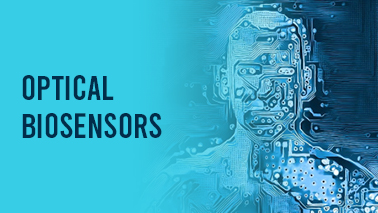
Optical biosensors are a form of biosensor that detects and measures the presence of a biological or chemical analyte using light. They work on the premise of detecting changes in a material's optical characteristics in response to the binding of an analyte to a receptor molecule.
There are several types of optical biosensors, including surface plasmon resonance (SPR), fluorescence, and bioluminescence biosensors. SPR biosensors detect changes in a surface's refractive index caused by biomolecular interactions, whereas fluorescence and bioluminescence biosensors detect changes in the intensity or wavelength of emitted light.
Optical biosensors have several advantages over other types of biosensors. They are very sensitive and selective, capable of detecting numerous analytes at the same time, and are easily miniaturized. They are also non-destructive and have a low detection limit, making them excellent for real-time monitoring and in-field applications.
Optical biosensors have a wide range of applications, including medical diagnostics, environmental monitoring, and food safety. I They can be used in medical diagnostics to detect illness biomarkers, monitor drug levels, and do genetic analysis. In environmental monitoring, optical biosensors can be used in environmental monitoring to identify toxins in water and air. They can be used in food safety to detect infections in food products.
Overall, optical biosensors are a highly efficient instrument for detecting and quantifying biological and chemical components. Ongoing research is aimed at increasing their sensitivity, selectivity, and stability in order to broaden their application in a various field.
Tags
Bioelectronics Conferences 2025 China
Switchable Bioelectronics Conferences
Biosensing Meetings
Bioelectronics Conferences 2025 USA
Biosensors Conferences 2025 Middle East
Implantable Bioelectronics Conferences
Biosensors Conferences 2025
Bioelectronics Conferences 2025 Asia
Wearable Bioelectronics Conferences
Biosensing Annual Conferences 2025
Bioelectronics Conferences 2025 Canada
Biosensors Conferences 2025
Optical Biosensors Conferences
Biosensors Conferences
Nanobiosensors Conferences
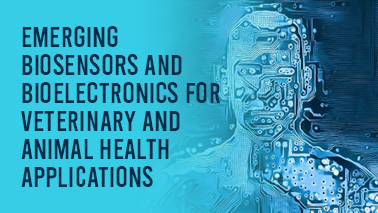
Biosensors and bioelectronics are rapidly becoming key instruments in veterinary and animal health applications. These technologies have the potential to improve animal disease diagnosis, treatment, and monitoring, as well as overall animal health and welfare.
The development of quick and accurate diagnostic tests is one area of interest for biosensors and bioelectronics in animal health. These tests can be used to diagnose infections and diseases in animals, such as viruses and bacteria. This can lead to earlier disease detection and treatment, reducing disease spread and improving animal welfare.
The development of biosensors for the detection of biomarkers in animal samples such as blood and urine are another area of attention. These biomarkers can detect diseases or conditions such as cancer or diabetes. Biosensors can detect these indicators non-invasively and in real time, allowing for more frequent and accurate monitoring of animal health.
Biosensors and bioelectronics can also be employed in animal medicine delivery and monitoring. Implantable devices that can release medications in response to particular conditions or devices that can monitor drug levels in the bloodstream to ensure optimal dosing.
Overall, the potential for veterinary and animal health applications of biosensors and bioelectronics is immense. The sensitivity, selectivity, and stability of these technologies are being improved through ongoing research and development, as well as new uses that will enhance animal welfare.
Tags
Bioelectronics Conferences 2025 China
Bioelectronics Conferences 2025 Europe
Wearable Biosensors Conferences
Biosensing Annual Conferences 2025
Implantable Bioelectronics Conferences
Biosensors Conferences 2025 Middle East
Switchable Bioelectronics Conferences
Bioelectronics Conferences 2025 USA
Biosensors Conferences 2025 China
Electrochemical Biosensors Conferences
Biosensor Technology Conferences
Biosensors Conferences 2025 Japan
Chemical Sensors and Biosensors Conferences
Bioelectronics Conferences 2025 USA
Optical Biosensors Conferences
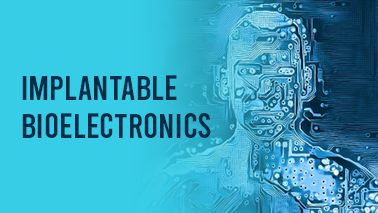
The creation and implementation of electronic devices implanted into the human body to monitor, diagnose, or treat various medical diseases is known as implantable bioelectronics. These gadgets can communicate with the biological systems of the body, delivering real-time feedback and allowing precise control of numerous physiological processes.
The pacemaker is an example of implantable bioelectronics that has been used for many years to regulate irregular cardiac rhythms. Other implantable devices, such as defibrillators and neurostimulators, have also been developed to treat illnesses such as epilepsy and Parkinson's disease.
Advances in materials science and microfabrication techniques are enabling for the development of more complicated implantable devices, such as implantable sensors and medication delivery systems, in recent years. These devices can monitor and distribute medications in response to certain situations or cues, such as glucose levels or blood pressure.
Implantable bioelectronics has the potential to transform the field of regenerative medicine. Implantable devices can be utilized as scaffolds to promote cell growth and differentiation, allowing for the regeneration of damaged or diseased tissues.
Despite the numerous advantages of implantable bioelectronics, there are also problems involved with their development and use. These challenges include the need for biocompatible materials, the risk of infection, and the need for long-term durability and reliability.
In conclusion, implantable bioelectronics is a fascinating and fast evolving field with immense potential for a wide range of medical applications. Ongoing research and development will be necessary to maximize the qualities and applications of implantable devices, allowing for the creation of safe, effective, and reliable treatments for a range of medical diseases.
Tags
Bioelectronics Conferences 2025 USA
Biosensors Conferences
Biosensors Conferences 2025 USA
Magneto Elastic Biosensors Conferences
Biosensing Annual Conferences 2025
Bioelectronics Conferences 2025 USA
Bioelectronics Conferences 2025 China
Bioelectronics Conferences 2025 Asia
Biosensors Conferences 2025
Biosensor Technology Conferences
Bioelectronics Conferences 2025 Europe
Implantable Bioelectronics Conferences
Advances in Biosensors Conferences
Biosensors Conferences 2025 China
Switchable Bioelectronics Conferences
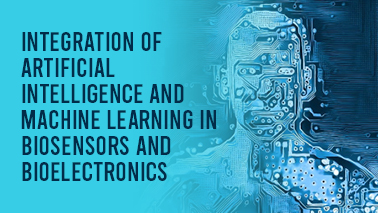
Artificial intelligence (AI) and machine learning (ML) implementation with biosensors and bioelectronics has the potential to transform the field by enabling more accurate, real-time data processing and decision-making. AI and machine learning can be used to process huge amounts of complicated data provided by biosensors and bioelectronic devices, allowing for the development of intelligent diagnostics and tracking systems.
The development of predictive models for disease identification and therapy is one application of AI and ML in biosensors. These models can forecast the early stages and progression of diseases and enable personalized treatment plans by evaluating a huge amount of patient information and biosensor data.
The development of sophisticated monitoring systems for environmental and biological factors is another application. These systems can continually monitor parameters like air quality, water quality, or vital signs and deliver real-time feedback and warnings in response to specified situations or events.
AI and machine learning can be used to improve the design and performance of biosensors and bioelectronic devices. These technologies may help in the identification of optimal designs for increased sensitivity, selectivity, and stability by assessing the features of various materials and device combinations.
One of the main challenges in integrating AI and ML in biosensors and bioelectronics is the need for large, high-quality datasets for training and validation. Additionally, there is a need for standardization and interoperability among different biosensors and bioelectronic devices to enable data sharing and analysis across platforms.
In conclusion, there is a huge potential for numerous applications in healthcare, environmental monitoring, and other fields with the integration of AI and ML in biosensors and bioelectronics. Current research and development is concentrated to enhance the accuracy, dependability, and scalability of these technologies, enabling the creation of intelligent and customized solutions for a variety of difficulties in biosensing and bioelectronics.
Tags
Wearable Bioelectronics Conferences
Bioelectronics Conferences 2025 Europe
Biosensing Annual Conferences 2025
Wearable Biosensors Conferences
Biosensors Conferences 2025 China
Bioelectronics Conferences 2025 China
Biosensors Conferences
Biosensor Technology Conferences
Biosensors Conferences 2025 USA
Optical Biosensors Conferences
Chemical Sensors and Biosensors Conferences
Bioelectronics Conferences 2025 USA
Magneto Elastic Biosensors Conferences
Advances in Biosensors Conferences
Switchable Bioelectronics Conferences
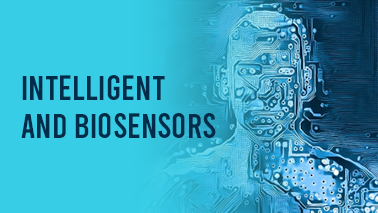
Intelligent biosensors are a type of biosensor that use machine learning (ML) and artificial intelligence (AI) algorithms to analyze data in real-time and make decisions. These sensors transform biological impulses into quantifiable electrical or optical signals that may be examined by AI and ML algorithms using a combination of biological recognition components and transducers.
One application of intelligent biosensors is in the field of healthcare. These sensors can be used to track various physiological characteristics, such blood sugar levels or heart rate, and they can give patients and healthcare professionals real-time feedback and alerts. Intelligent biosensors can also be employed to accurately and quickly diagnose diseases like cancer and infectious infections.
Another application is in environmental monitoring. Monitoring the environment is another use. Intelligent biosensors can be used to continuously track numerous environmental factors, such as air quality, water quality, and soil contamination, and they may also give real-time feedback and alarms in response to particular circumstances or events.
Intelligent biosensors can also be utilized in industrial settings to monitor various factors such as temperature and pressure to guarantee optimal process control and quality assurance.
One of the main advantages of intelligent biosensors is their ability to process and analyze large amounts of complex data generated by biosensors and bioelectronic devices. This allows for more precise monitoring, diagnosis, and decision-making, ultimately improving patient outcomes and environmental quality.
However, there are several obstacles connected with the development and application of intelligent biosensors, such as the requirement for large, high-quality datasets for training and validation, as well as the requirement for standardization and interoperability among different biosensors and bioelectronic devices.
In conclusion, intelligent biosensors are a fascinating and fast evolving topic with huge potential in healthcare, environmental monitoring, and industrial settings. Ongoing research and development will be necessary to improve these technologies for increased accuracy, reliability, and scalability, allowing the creation of intelligent and personalized solutions to diverse biosensing and bioelectronics challenges.
Tags
Bioelectronics Conferences 2025 Canada
Biosensors Conferences 2025
Biosensors Conferences 2025
Biosensing Annual Conferences 2025
Implantable Bioelectronics Conferences
Biosensors Conferences
Biosensors Conferences 2025 China
Bioelectronics Conferences 2025 Europe
Electrochemical Biosensors Conferences
Biosensors Conferences 2025 Japan
Magneto Elastic Biosensors Conferences
Optical Biosensors Conferences
Biosensors Conferences 2025 Middle East
Bioelectronics Conferences 2025 USA
Bioelectronics Conferences 2025 USA
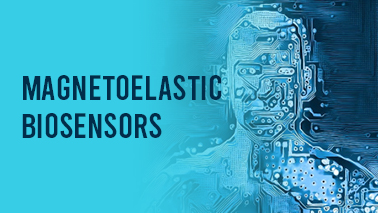
Magnetoelastic biosensors are a type of biosensor that detects and quantifies biological molecules such as DNA, proteins, and viruses using magnetoelastic materials. These biosensors are based on the magnetostriction concept, which describes the capacity of some materials to alter form or size in response to an applied magnetic field.
In a magnetoelastic biosensor, a magnetoelastic material, such as iron or nickel, is coated with a biological recognition element, such as antibodies or DNA probes, that selectively binds to the target biological molecule. When the target molecule binds to the recognition element, it causes a change in the mass and magnetic properties of the magnetoelastic material, which can be detected as a change in the resonance frequency of the material.
Magnetoelastic biosensors have a high sensitivity and specificity because they can detect minor changes in the material's mass and magnetic characteristics induced by the binding of the target molecule. They're also simple and affordable to create, making them a promising technology for point-of-care diagnostics.
Magnetoelastic biosensors have been used to detect biological molecules such as DNA, proteins, and viruses in a wide range of samples including blood, saliva, and environmental samples. They've also been used to detect diseases in food and water.
However, there are several obstacles associated with the development and usage of magnetoelastic biosensors, such as the requirement for recognition element optimization and additional validation and standardization. Furthermore, detecting several targets at the same time is difficult in these biosensors.
In conclusion, magnetoelastic biosensors are a promising technique for high sensitivity and specificity detection of biological substances. Ongoing research and development will be required to optimize these technologies for various uses in healthcare, environmental monitoring, and food safety, enabling the development of reliable and accurate point-of-care diagnostic solutions.
Tags
Nanobiosensors Conferences
Switchable Bioelectronics Conferences
Biosensors Conferences
Optical Biosensors Conferences
Bioelectronics Conferences 2025 USA
Wearable Bioelectronics Conferences
Biosensors Conferences 2025 Japan
Biosensing Meetings
Biosensors Conferences 2025
Bioelectronics Conferences 2025 China
Wearable Biosensors Conferences
Biosensing Annual Conferences 2025
Bioelectronics Conferences 2025 Europe
Biosensors Conferences 2025 China
Bioelectronics Conferences 2025 Canada
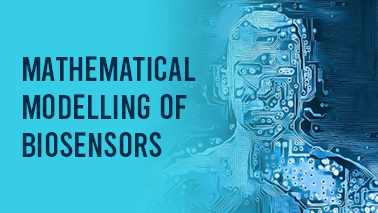
Mathematical modeling of biosensors is the process of describing and forecasting biosensor behavior, such as sensitivity, specificity, and response time, using mathematical equations. These models can be applied to experimental data interpretation as well as biosensor design and performance optimization.
One common approach to mathematical modeling of biosensors is based on the Langmuir isotherm, which describes the binding of a ligand to a receptor as a reversible equilibrium process. This model assumes that the biosensor response is proportional to the amount of ligand bound to the receptor, and that the binding is independent of the concentration of other species in the sample.
The application of thermodynamic and kinetic models plays a vital role in the mathematical simulation of biosensors. These models depict alterations in free energy resulting from interactions between ligands and receptors, as well as the rates at which ligands attach to and detach from receptors.
Mathematical simulations can also be employed to understand the behavior of biosensors in diverse experimental conditions, including variations in temperature, pH, or ionic strength. Such simulations are valuable in pinpointing potential sources of interference or cross-reactivity, as well as enhancing the overall performance of biosensors in different operational scenarios.
Furthermore, mathematical modeling serves as a valuable tool for extracting pertinent information about the analyzed sample and interpreting experimental data. For instance, it is possible to fit experimental data to a mathematical model, further aiding in optimizing biosensor performance.
Tags
Biosensing Annual Conferences 2025
Wearable Biosensors Conferences
Magneto Elastic Biosensors Conferences
Biosensors Conferences 2025 Middle East
Bioelectronics Conferences 2025 Europe
Biosensors Conferences 2025 China
Wearable Bioelectronics Conferences
Optical Biosensors Conferences
Bioelectronics Conferences 2025
Biosensors Conferences 2025 Japan
Bioelectronics Conferences 2025 China
Biosensors Conferences
Bioelectronics Conferences 2025 Canada
Implantable Bioelectronics Conferences
Switchable Bioelectronics Conferences
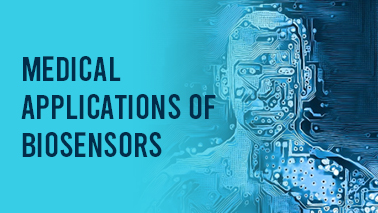
Biosensors find extensive utility in the field of medicine, serving various crucial roles such as disease diagnosis, monitoring therapeutic treatments, and identifying disease-related biomarkers. Some illustrative medical applications of biosensors include the following:
Glucose Monitoring: Biosensors are a common choice for tracking glucose levels in individuals with diabetes. These specialized biosensors employ enzymes like glucose oxidase to transform glucose into an electrical signal, facilitating the measurement and determination of the patient's blood glucose levels.
Point-of-Care Diagnostics: Biosensors play a pivotal role in rapidly diagnosing diseases at the point of care, including conditions like HIV, tuberculosis, and malaria. They can detect specific disease-associated biomarkers in blood, saliva, or urine samples, providing swift and accurate results.
Cancer Diagnosis: Biosensors can identify specific biomarkers linked to cancer, such as cancer antigens and circulating tumor cells. This application aids in early cancer detection, monitoring disease progression, and assessing the effectiveness of treatment.
Infectious Disease Detection: Biosensors are valuable tools for detecting specific biomarkers associated with infectious diseases, such as bacteria and viruses. They enable the rapid and precise diagnosis of infectious diseases and the monitoring of treatment outcomes.
Drug Monitoring: Biosensors are adept at monitoring drug levels in patients undergoing therapeutic interventions. For instance, they are employed to monitor antibiotic levels in patients with infections or anti-cancer drug concentrations in those receiving chemotherapy.
Wearable Biosensors: Biosensors can be seamlessly integrated into wearable devices like smartwatches and fitness trackers, enabling the continuous monitoring of vital signs such as heart rate, blood pressure, and oxygen saturation. This technology is instrumental in maintaining overall health and detecting early signs of illness or disease.
In summary, biosensors exhibit immense potential in the realm of medicine, offering advantages such as early disease detection, personalized medicine, and on-the-spot diagnostics. Ongoing research and development in biosensor technology are poised to drive further advancements and innovative medical applications in the future.
Tags
Biosensors Conferences 2025 Middle East
Biosensors Conferences 2025 China
Bioelectronics Conferences 2025 Canada
Bioelectronics Conferences 2025
Bioelectronics Conferences 2025 Asia
Biosensing Meetings
Bioelectronics Conferences 2025 USA
Biosensors Conferences 2025
Biosensing Annual Conferences 2025
Switchable Bioelectronics Conferences
Bioelectronics Conferences 2025 China
Wearable Biosensors Conferences
Chemical Sensors and Biosensors Conferences
Magneto Elastic Biosensors Conferences
Implantable Bioelectronics Conferences
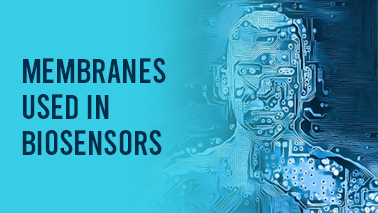
Membranes play a crucial role in the functionality of biosensors, serving as a protective barrier between the sample and the sensor, while also amplifying the sensor's selectivity and sensitivity. Various types of membranes are employed in biosensors, each with distinct applications:
Polymer Membranes: Polymer Membranes are popular options for biosensors, along with polyurethane and polyethylene. By including particular functional groups or biomolecules, polymer membranes can be tailored to increase sensor selectivity.
Lipid Membranes: Lipid membranes, which include liposomes and lipid bilayers, resemble biological membranes and serve as a basis for the identification of biomolecules linked with membranes. The sensitivity and selectivity of the sensor can be increased by adding receptors or antibodies to sensors.
Hydrogel Membranes: Hydrogel membranes like polyacrylamide and agarose are utilized for immobilizing enzymes and other biomolecules in biosensors. Functional group modifications enhance the binding of the target analyte, thereby improving sensitivity and selectivity.
Ceramic Membranes: Zeolites and alumina are two examples of ceramic membranes that provide stability and rigidity to biosensors that are used to detect gases and tiny molecules. To improve sensor sensitivity and selectivity, these membranes can be customized with particular functional groups.
Nanoporous Membranes: Nanoporous membranes such as nanofibers and nanotubes provide a high surface area for biomolecule detection. They can be customized with receptors or antibodies to heighten sensor sensitivity and selectivity.
The particular application and the properties of the target substance determine which membrane is best for a certain biosensor. The sensitivity, selectivity, and general performance of the biosensor can be improved for a wide range of applications by carefully selecting and altering the membrane.
Tags
Biosensing Annual Conferences 2025
Wearable Bioelectronics Conferences
Biosensors Conferences 2025 USA
Switchable Bioelectronics Conferences
Bioelectronics Conferences 2025 Canada
Biosensors Conferences 2025
Electrochemical Biosensors Conferences
Bioelectronics Conferences 2025 China
Biosensors Conferences
Bioelectronics Conferences 2025 Europe
Nanobiosensors Conferences
Magneto Elastic Biosensors Conferences
Bioelectronics Conferences 2025 Asia
Biosensors Conferences 2025
Biosensing Meetings
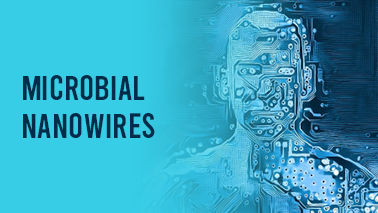
Some microorganisms, such as Geobacter and Shewanella, have the natural ability to produce microbial nanowires, which are thin, conductive protein threads. These nanowires are composed of a protein called PilA, which forms elongated filaments that efficiently facilitate the transport of electrons over considerable distances.
These remarkable microbial nanowires are believed to play a vital role in facilitating electron transfer processes in particular environments, such as sediments and soils. In these settings, these nanowires act as efficient "cables," enabling the transfer of electrons from microorganisms to other cells or minerals within the environment.
Recent years have witnessed a growing interest in microbial nanowires due to their promising applications in the fields of bioelectronics and biotechnology. For instance, they can be integrated into microbial fuel cells, innovative devices that harness electricity from the metabolic activities of microorganisms. Additionally, these nanowires can serve as conductive frameworks for the cultivation of other microorganisms, which can be harnessed to produce valuable products like biofuels and pharmaceuticals.
Ongoing research endeavors are dedicated to a deeper understanding of microbial nanowire properties and their diverse applications. These efforts also aim to develop novel techniques for their production and manipulation. As this research progresses, microbial nanowires hold significant potential to become integral components in the emerging domains of bioelectronics and biotechnology.
Tags
Biosensors Conferences 2025 USA
Bioelectronics Conferences 2025 USA
Optical Biosensors Conferences
Electrochemical Biosensors Conferences
Biosensors Conferences 2025
Magneto Elastic Biosensors Conferences
Biosensing Meetings
Bioelectronics Conferences 2025 China
Advances in Biosensors Conferences
Bioelectronics Conferences 2025
Biosensors Conferences
Biosensors Conferences 2025 Japan
Chemical Sensors and Biosensors Conferences
Biosensors Conferences 2025 China
Bioelectronics Conferences 2025 Europe
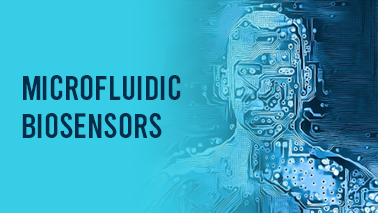
Microfluidic biosensors are a novel class of biosensor that combines biological sensing elements with microfluidic technology. The controlled movement of small volumes of fluids in microscopic channels and chambers is known as microfluidics. It provides a number of benefits for biosensors, including accurate flow rate control, decreased amounts of sample and reagent, and enhanced detection speed and sensitivity.
Microfluidic biosensors work by immobilizing biological sensing components, such as enzymes, antibodies, or nucleic acid probes, on the surface of microfluidic channels or chambers. The target analyte in the sample interacts with the biological sensing component, generating a signal, such as a change in electrical or optical properties. The biosensor then detects and quantifies the signal.
Microfluidic biosensors advantages:
They can be designed to perform multiple analyses simultaneously, reducing the time and cost of analysis.Microfluidic biosensors can be integrated with other components, such as microelectrodes and micro-optical detectors, to allow for real-time and in situ monitoring of biological processes.
Microfluidic biosensors have applications in a wide range of fields:
Microfluidic biosensors can be used to detect pathogens in food samples.They monitor the levels of pollutants in water.Diagnose diseases by detecting specific biomarkers in bodily fluids.
In summary, microfluidic biosensors are a promising new technology for the rapid and sensitive detection of biological analytes. They have the potential to revolutionize a wide range of fields by enabling real-time and on-site monitoring of biological processes.
Tags
Biosensors Conferences 2025
Biosensors Conferences
Nanobiosensors Conferences
Biosensors Conferences 2025 USA
Bioelectronics Conferences 2025 Canada
Bioelectronics Conferences 2025
Bioelectronics Conferences 2025 Asia
Biosensors Conferences 2025 Japan
Optical Biosensors Conferences
Chemical Sensors and Biosensors Conferences
Bioelectronics Conferences 2025 Europe
Magneto Elastic Biosensors Conferences
Biosensors Conferences 2025 China
Advances in Biosensors Conferences
Implantable Bioelectronics Conferences
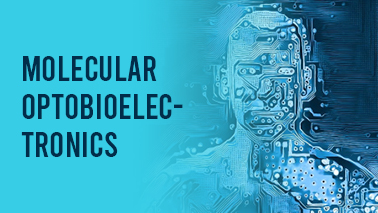
Molecular optobioelectronics is a cutting-edge field that merges molecular electronics, optoelectronics, and biology to create novel devices for sensing, imaging, and therapy. This field blends the principles of molecular electronics, which utilizes molecules as building blocks for electronic devices, with optoelectronics, which employs light to regulate the electrical and optical properties of materials.
In molecular optobioelectronics, biological molecules like proteins, DNA, and enzymes are incorporated with electronic and optical components to generate devices with distinctive sensing and actuation capabilities.
For example, photosensitive molecules like bacteriorhodopsin or green fluorescent protein can be employed to create devices that convert light into electrical signals or vice versa.
Alternatively, DNA can serve as a scaffold to arrange electronic and optical components into specific patterns, enabling the development of highly ordered and functional devices.
Molecular optobioelectronics applications:
Molecular optobioelectronics can be used to develop biosensors that detect specific biomolecules or pathogens with exceptional sensitivity and specificity.
In bioimaging, molecular optobioelectronics can give rise to new imaging modalities that provide high-resolution images of biological processes at the molecular level.
In optogenetics, molecular optobioelectronics can lead to the development of devices that control the activity of neurons or other cells using light.
In essence, molecular optobioelectronics is a vibrant and rapidly evolving field with the potential to revolutionize various domains of biology and biotechnology by enabling novel approaches for sensing, imaging, and therapy.
Tags
Implantable Bioelectronics Conferences
Advances in Biosensors Conferences
Electrochemical Biosensors Conferences
Nanobiosensors Conferences
Bioelectronics Conferences 2025 USA
Bioelectronics Conferences 2025 Europe
Optical Biosensors Conferences
Bioelectronics Conferences 2025 China
Biosensors Conferences
Bioelectronics Conferences 2025
Wearable Biosensors Conferences
Biosensors Conferences 2025 USA
Biosensors Conferences 2025
Biosensor Technology Conferences
Biosensors Conferences 2025 China
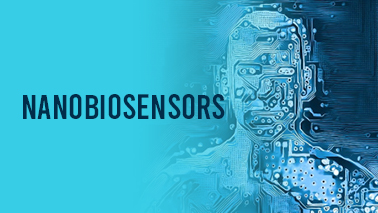
Nanobiosensors are analytical devices that combine nanomaterials with a biological sensing element to detect and measure specific biological molecules. These sensors leverage the unique properties of nanomaterials, such as nanoparticles, nanowires, or nanotubes, to enhance sensitivity and precision in detecting biomolecules. The incorporation of a biological sensing element, such as enzymes, antibodies, or nucleic acid probes, enables selective recognition of target analytes.
Nanobiosensors have several advantages over nanomaterials: -
1. The small size of nanomaterials provides:
• A large surface area to volume ratio
• Allowing for increased sensitivity
• Faster response times.
2. Additionally, the unique properties of nanomaterials, such as:
• High surface reactivity
• High Optical and electrical properties
• Biocompatibility.
• They can be exploited for the development of highly sensitive
and selective biosensors.
Nanobiosensors have applications in a wide range of fields, including medical diagnostics, environmental monitoring, and food safety:
Medical Diagnostics: Nanobiosensors play a crucial role in early disease diagnosis by detecting biomarkers indicative of various ailments, such as cancer, diabetes, and infectious diseases.
Environmental Monitoring: Nanobiosensors are employed to monitor environmental pollutants, providing real-time data on the quality of water, air, and soil. Which are essential for environmental protection and pollution control measures.
Food Safety: Nanobiosensors safeguard the food supply by detecting foodborne pathogens and toxins, ensuring the safety of food products and preventing the spread of foodborne illnesses.
In summary, nanobiosensors represents a promising technology for the detection and quantification of biological analytes, and have the potential to revolutionize several fields by enabling fast, sensitive, and selective detection of biological targets.
Tags
Electrochemical Biosensors Conferences
Bioelectronics Conferences 2025
Biosensors Conferences
Nanobiosensors Conferences
Biosensors Conferences 2025 China
Switchable Bioelectronics Conferences
Wearable Bioelectronics Conferences
Bioelectronics Conferences 2025 USA
Biosensors Conferences 2025
Bioelectronics Conferences 2025 Europe
Bioelectronics Conferences 2025 China
Biosensors Conferences 2025 USA
Wearable Biosensors Conferences
Biosensors Conferences 2025
Bioelectronics Conferences 2025 USA
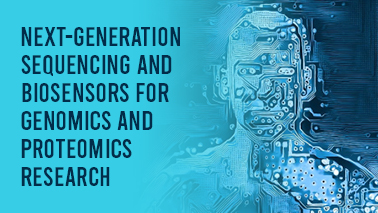
Next-generation sequencing (NGS) and biosensors are revolutionizing genomics and proteomics research. NGS enables researchers to decipher vast stretches of genomes and transcriptomes, revealing the genetic underpinnings of diseases. Biosensors offer a sophisticated approach to detecting and measuring biological molecules.
The integration of NGS and biosensors has the potential to revolutionize genomics and proteomics research. Biosensors can be employed to pinpoint specific genetic mutations or biomarkers, which are then subjected to comprehensive analysis using NGS. This powerful combination enables rapid and accurate disease diagnosis, facilitates the identification of novel drug targets, and paves the way for personalized medicine.
Furthermore, the integration of NGS and biosensors into microfluidic devices has given rise to the development of lab-on-a-chip systems. These compact devices have the remarkable capacity to perform multiple analytical steps within a single unit, significantly reducing the time and cost associated with genomics and proteomics research. This miniaturization has made these technologies more accessible to a broader range of researchers, democratizing access to cutting-edge tools for scientific discovery.
In conclusion, the merging of NGS and biosensors represents a dynamic and rapidly advancing field in genomics and proteomics research. These transformative technologies hold great promise for revolutionizing healthcare by enabling faster and more precise diagnoses, facilitating the advancement of personalized medicine, and opening up new avenues for drug discovery.
Tags
Biosensors Conferences 2025 Japan
Optical Biosensors Conferences
Bioelectronics Conferences 2025
Bioelectronics Conferences 2025 USA
Biosensors Conferences 2025 China
Bioelectronics Conferences 2025 Europe
Wearable Bioelectronics Conferences
Biosensing Meetings
Switchable Bioelectronics Conferences
Biosensors Conferences 2025
Electrochemical Biosensors Conferences
Biosensors Conferences
Biosensors Conferences 2025
Biosensors Conferences 2025 USA
Bioelectronics Conferences 2025 Asia
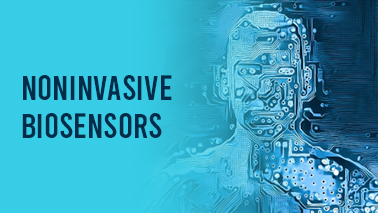
Noninvasive biosensors offer a transformative approach to measuring biological parameters, eliminating the need for invasive procedures and providing enhanced patient comfort, safety, and continuous monitoring.
Diverse Types of Noninvasive Biosensors:
1.Optical biosensors:
These ingenious devices utilize light to detect alterations in biological molecules, such as proteins or DNA.Their versatility enables them to monitor a wide range of biological parameters, including glucose levels, hormone levels, and DNA mutations.
2.Electrochemical biosensors:
These remarkable tools employ electrochemical reactions to detect changes in biological molecules, such as glucose, cholesterol, and neurotransmitters.Their precision and sensitivity make them invaluable for monitoring crucial physiological parameters.
3.Wearable biosensors:
These revolutionary devices seamlessly integrate with the body, enabling continuous monitoring of various physiological parameters, such as heart rate, blood pressure, and temperature.Their convenience and real-time data accessibility have revolutionized personal health monitoring.
Noninvasive biosensors applications:
Sports and Fitness
Environmental Monitoring
Noninvasive biosensors represent an exciting and rapidly evolving field of research, with the potential to transform healthcare and revolutionize various industries. As technology advances, these innovative devices are poised to play an increasingly pivotal role in improving human health, optimizing performance, and safeguarding the environment.
Tags
Bioelectronics Conferences 2025
Bioelectronics Conferences 2025 Asia
Implantable Bioelectronics Conferences
Wearable Biosensors Conferences
Biosensor Technology Conferences
Biosensors Conferences
Bioelectronics Conferences 2025 Canada
Biosensors Conferences 2025
Bioelectronics Conferences 2025 Europe
Advances in Biosensors Conferences
Bioelectronics Conferences 2025 USA
Biosensors Conferences 2025 Japan
Bioelectronics Conferences 2025 USA
Optical Biosensors Conferences
Switchable Bioelectronics Conferences
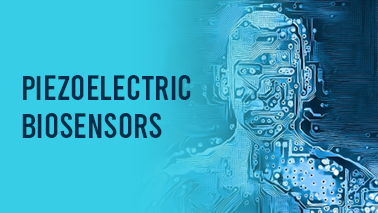
Piezoelectric biosensors use the piezoelectric effect to detect changes in mass or viscoelasticity on the sensor surface, observed in materials like quartz or ceramics. Coated with a specific biorecognition element, such as an antibody or enzyme for a target analyte, the interaction results in surface modifications, generating a measurable electrical signal.
Piezoelectric biosensors advantages:
Encompassing heightened sensitivity, swift response times, label-free detection and cost-effective to manufacture.
They are applicable for detecting a diverse range of analytes, including proteins, nucleic acids, and small molecules.
Piezoelectric biosensors applications:
In disease diagnosis, drug discovery, and monitoring therapeutic drug levels.
They also prove valuable in food safety testing, detecting pathogens, and environmental monitoring for identifying pollutants.
In summary, piezoelectric biosensors emerge as a promising and versatile technology poised to transform healthcare and various industries. Ongoing research endeavors in this domain are concentrated on enhancing the sensitivity and selectivity of piezoelectric biosensors, alongside the development of novel materials and biorecognition elements for incorporation into these sensors
Tags
Bioelectronics Conferences 2025
Advances in Biosensors Conferences
Biosensing Annual Conferences 2025
Chemical Sensors and Biosensors Conferences
Optical Biosensors Conferences
Biosensors Conferences 2025 Japan
Biosensors Conferences 2025
Bioelectronics Conferences 2025 USA
Bioelectronics Conferences 2025 USA
Bioelectronics Conferences 2025 Asia
Bioelectronics Conferences 2025 Europe
Biosensors Conferences 2025 China
Biosensors Conferences 2025 Middle East
Wearable Biosensors Conferences
Biosensors Conferences 2025 USA
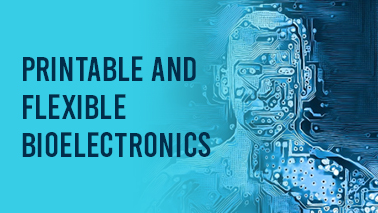
Printable and flexible bioelectronics,characterized by flexibility, stretchability, and conformity to body contours, have the potential to revolutionize how we monitor and interact with our bodies. Unlike traditional electronics, these devices, made with conductive inks, polymers, and nanomaterials, can be easily produced on various substrates like plastic or paper using cost-effective printing techniques such as inkjet or screen printing, making them more accessible than traditional electronics.
Printable and flexible bioelectronics advantages:
Lower cost: Printable and flexible bioelectronics are much cheaper to produce than traditional electronics. This is because they can be made using less expensive materials and simpler manufacturing processes.
Reduced weight and thickness: These devices are lightweight and thin, which makes them more comfortable to wear and less likely to irritate the skin.
Conformability: They can bend and mold to the contours of the body, which makes them ideal for use in wearable and implantable sensors.
High scalability: They can be produced in large volumes at low cost.
Printable and flexible bioelectronics applications:
Wearable sensors: These sensors can be used to monitor a variety of vital signs, such as heart rate, blood pressure, and respiration. They can also be used to track glucose levels for patients with diabetes.
Implantable sensors: These sensors can be used to monitor tissue healing, drug delivery, and other internal processes.
Neurotechnology: Printable and flexible bioelectronics have the potential to be used to create new types of brain-computer interfaces that are more comfortable and less invasive than traditional devices.
This is a rapidly evolving field, and new applications are being developed all the time. As the technology continues to improve, we can expect to see even more innovative and life-changing products emerge.
Tags
Biosensors Conferences 2025 Japan
Biosensing Annual Conferences 2025
Biosensors Conferences 2025 China
Biosensors Conferences 2025 Middle East
Chemical Sensors and Biosensors Conferences
Bioelectronics Conferences 2025 China
Bioelectronics Conferences 2025 USA
Biosensors Conferences 2025
Biosensing Meetings
Biosensors Conferences
Bioelectronics Conferences 2025 Canada
Wearable Bioelectronics Conferences
Biosensor Technology Conferences
Nanobiosensors Conferences
Optical Biosensors Conferences
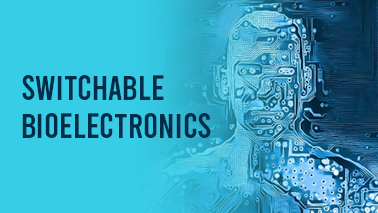
Wearable bioelectronics are electronic devices designed to be worn on or inside the body for sensing and monitoring biological processes. These devices range from simple heart rate and step trackers to more complex systems monitoring glucose levels, blood pressure, and other physiological parameters.
Utilizing flexible materials like polymers, wearable bioelectronics ensure comfortable and conformal contact with the skin. They incorporate sensors like electrodes or optical sensors to measure biological signals, transmitting data to a mobile device or cloud platform for analysis.
Wearable bioelectronics applications:
Medical Diagnostics,
Health Monitoring,
Fitness Tracking, and Entertainment.
They detect early signs of infection or inflammation through changes in skin temperature or electrical impedance.
They also provide real-time glucose monitoring for diabetes patients, reducing the need for frequent blood tests.
Wearable bioelectronics advantages:
It increases convenience and mobility.
They have the potential for more accurate and continuous monitoring, enhancing healthcare quality.
In conclusion, wearable bioelectronics hold significant potential as a technology for advancing personalized and uninterrupted health monitoring systems. Current investigations in this field concentrate on enhancing the efficacy and user-friendliness of these gadgets, while also delving into novel applications and their integration with other technologies like artificial intelligence and machine learning.
Tags
Biosensing Annual Conferences 2025
Biosensors Conferences 2025 Japan
Biosensors Conferences 2025 USA
Optical Biosensors Conferences
Bioelectronics Conferences 2025 Asia
Electrochemical Biosensors Conferences
Biosensors Conferences 2025
Chemical Sensors and Biosensors Conferences
Biosensor Technology Conferences
Switchable Bioelectronics Conferences
Biosensors Conferences 2025
Biosensors Conferences
Bioelectronics Conferences 2025
Biosensors Conferences 2025 China
Wearable Bioelectronics Conferences
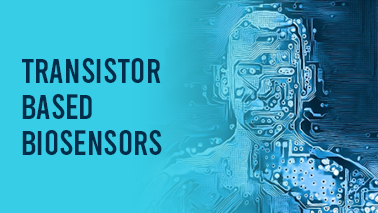
Transistor-based biosensors offer a revolutionary approach to biomolecule detection, utilizing transistors as the sensing element. This technology holds immense potential for developing highly sensitive, selective, and specific sensors for diverse applications.
These biosensors typically employ a thin film transistor (TFT) functionalized with a specific biological molecule, like an enzyme, antibody, or DNA probe. When the target analyte (biomolecule or chemical compound) interacts with this biological probe, it triggers a signal that the TFT can detect.
Transistor-based biosensors Advantages:-
High sensitivity, selectivity, and specificity: Detecting even minute amounts of target analytes with high accuracy.
Real-time detection: Providing immediate results for rapid analysis.
Miniaturization: Enabling development of portable and wearable biosensors for on-the-go detection.
Transistor-based biosensors Applications:
Medical diagnostics: Detecting glucose, cholesterol, and other biomolecules for disease diagnosis and monitoring.
Environmental monitoring: Identifying pollutants and contaminants in water and air.
Food safety: Detecting foodborne pathogens and contaminants.
Biosecurity: Identifying bioterrorism agents.
The future of transistor-based biosensors is bright, with ongoing research focused on:
Improved performance and reliability
Exploration of new materials
Development of novel applications
Overall, transistor-based biosensors represent a transformative technology with immense potential to revolutionize the way we detect and analyze biomolecules across a wide range of applications.
Tags
Biosensors Conferences 2025
Bioelectronics Conferences 2025 USA
Nanobiosensors Conferences
Wearable Biosensors Conferences
Bioelectronics Conferences 2025
Optical Biosensors Conferences
Biosensors Conferences 2025 China
Biosensing Meetings
Biosensors Conferences 2025 Middle East
Bioelectronics Conferences 2025 Asia
Bioelectronics Conferences 2025 USA
Biosensors Conferences
Implantable Bioelectronics Conferences
Biosensor Technology Conferences
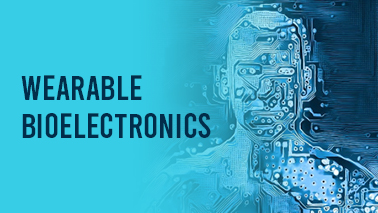
Switchable bioelectronics refer to the development of electronic devices that can be turned on or off in response to biological or environmental stimuli. This technology has the potential to revolutionize the field of biosensors and bioelectronics by enabling the development of devices that can be selectively activated or deactivated in response to specific biological or environmental signals.
Switchable bioelectronics can be realized through the use of a variety of materials and mechanisms, including redox-active molecules, enzymes, and biological receptors. These materials and mechanisms can be incorporated into electronic devices to create a responsive, switchable system.
Applications of switchable bioelectronics include biosensors that can be selectively activated in response to specific biomolecules, such as glucose or dopamine. They can also be used in drug delivery systems that can be triggered to release drugs in response to specific physiological signals, such as changes in pH or temperature.
Switchable bioelectronics have several advantages over traditional biosensors and electronic devices, including the ability to selectively respond to specific biological or environmental signals, as well as improved sensitivity and specificity. They also have the potential to be used in a wide range of applications, including biomedical research, disease diagnosis and treatment, and environmental monitoring.
In conclusion, switchable bioelectronics represent a promising technology for the development of responsive, selective biosensors and electronic devices. Ongoing research in this area is focused on improving the performance and reliability of these devices, as well as exploring new materials and mechanisms for use in future applications.
Tags
Biosensors Conferences 2025 China
Optical Biosensors Conferences
Bioelectronics Conferences 2025 USA
Electrochemical Biosensors Conferences
Advances in Biosensors Conferences
Chemical Sensors and Biosensors Conferences
Wearable Bioelectronics Conferences
Biosensors Conferences
Biosensors Conferences 2025 Middle East
Switchable Bioelectronics Conferences
Biosensing Annual Conferences 2025
Bioelectronics Conferences 2025
Biosensing Meetings
Magneto Elastic Biosensors Conferences
Biosensors Conferences 2025 Japan
MARKET VALUATION OF BIOSENSORS IN US:
The market of biosensors was estimated at USD 26.8 billion in 2022, and from 2023 to 2030, it is anticipated to increase at a CAGR of 8.0%. The US market for biosensors is expected to grow at a CAGR of 8.2% from 2023 to 2030.
The growth of the US biosensors market is being driven by the increasing demand for point-of-care (POC) diagnostics, the rising incidence of chronic diseases, and the growing focus on personalized medicine. These devices are becoming increasingly popular due to their convenience and rapid results.
The major players in the US biosensors market include Abbott Laboratories, Johnson & Johnson, Roche Diagnostics, Siemens Healthineers, and Thermo Fisher Scientific.
These companies are investing in research and development to develop innovative biosensors for a variety of applications. They are also increasing their distribution networks to reach a wider audience.
Here are some of the key trends that are shaping the US biosensors market:
• Increasing demand for POC diagnostic
• Rising incidence of chronic diseases
• Growing focus on personalized medicine
• Development of new technologies such as nanotechnology and molecular diagnostics
• Expansion of distribution channels
The US biosensors market is a dynamic and growing market. The key players in the market are constantly innovating and developing new products to meet the needs of the market. The market is expected to continue to grow in the coming years, driven by the factors mentioned above.
MARKET VALUATION OF BIOSENSORS IN EUROPE:
The European biosensors market was valued at USD 22.18 billion in 2022 and is expected to reach USD 31.87 billion by 2027, registering a CAGR of 6.64% during the forecast period. The growth of the market is driven by the increasing demand for point-of-care (POC) diagnostics, rising prevalence of chronic diseases, and technological advancements in biosensors.
Here are some of the challenges faced by the European biosensors market:
• High cost of biosensors
• Stringent regulatory requirements
• Lack of awareness about biosensors
Overall, the European biosensors market is expected to grow at a healthy CAGR during the forecast period. The factors mentioned above boost the market's evolution. However, the market faces some challenges, which could hinder its growth to some extent.
MARKET VALUATION OF BIOSENSORS IN MIDDLE EAST:
The Middle East and Africa (MEA) biosensors market is expected to grow at a CAGR of 8.5% from 2022 to 2030. The market is driven by the rising prevalence of chronic diseases, increasing demand for point-of-care (POC) diagnostics, and growing government initiatives to improve healthcare infrastructure in the region.
The MEA biosensors market is segmented by technology, application, and end-user. By technology, the market is segmented into electrochemical biosensors, optical biosensors, and piezoelectric biosensors. Electrochemical biosensors are the largest segment of the market, owing to their high sensitivity and specificity.
Optical biosensors are the fastest growing segment, due to their advantages such as portability, ease of use, and low cost.
The following are some of the key drivers of the MEA biosensors market:
Rising prevalence of chronic diseases: The prevalence of chronic diseases such as diabetes, cancer, and cardiovascular diseases is rising in the MEA region. This is driving the demand for biosensors for early diagnosis and monitoring of these diseases.
Increasing demand for point-of-care (POC) diagnostics: POC diagnostics are becoming increasingly popular in the MEA region due to their advantages such as faster results, ease of use, and lower cost. Biosensors are a key enabling technology for POC diagnostics.
Growing government initiatives to improve healthcare infrastructure: Governments in the MEA region are investing in improving healthcare infrastructure. This includes investing in the development of new hospitals and clinics, as well as the procurement of new medical equipment. This is creating opportunities for the growth of the biosensors market.
The following are some of the challenges faced by the MEA biosensors market:
High cost of biosensors: Biosensors are relatively expensive devices. This can be a barrier to their adoption in some countries in the region.
Lack of skilled professionals: There is a lack of skilled professionals in the MEA region to support the use of biosensors. This can be a challenge for the growth of the market.
Regulatory challenges: There are some regulatory challenges associated with the use of biosensors in the MEA region. This can slow down the adoption of these devices.
MARKET VALUATION OF BIOSENSORS IN ASIA:
The major players in the Asia-Pacific biosensors market are Abbott Laboratories, Johnson & Johnson, Siemens Healthcare, Roche Diagnostics, and Becton, Dickinson and Company. These companies are engaged in developing innovative biosensors for various applications.
Here are some of the key trends that are driving the growth of the Asia-Pacific biosensors market:
Rising prevalence of chronic diseases: The increasing prevalence of chronic diseases such as diabetes, cancer, and cardiovascular diseases is driving the demand for biosensors for diagnosis and monitoring.
Growing demand for point-of-care testing: The increasing demand for point-of-care testing is driving the demand for portable and user-friendly biosensors.
Growing government initiatives to promote early diagnosis and preventive healthcare: The growing government initiatives to promote early diagnosis and preventive healthcare are also driving the demand for biosensors.
Technological advancements: The technological advancements in biosensors such as miniaturization, integration, and multiplexing are also driving the growth of the market.
MARKET VALUATION OF BIOELECTRONICS IN US:
The bioelectronics market in the US is expected to reach a value of US$25.27 billion by 2030, growing at a CAGR of 10.62% from 2022 to 2030. The US is the largest market for bioelectronics, accounting for a share of 35.2% in 2022. The growth of the bioelectronics market in the US is being driven by a number of factors, including:
The increasing prevalence of chronic diseases, such as diabetes, heart disease, and cancer.
• The growing aging population.
• Increasing demand for minimally invasive treatment.
• The increasing investment in research and development of bioelectronic devices.
The increasing number of collaborations between pharmaceutical companies, medical device manufacturers, and academic institutions.
The bioelectronics market is segmented into the following:
• By product: Implantable devices, wearable devices, diagnostic devices, and therapeutic devices.
• By application: Neurology, cardiology, ophthalmology, and dermatology.
• By end-user: Hospitals, clinics, and research institutes.
The wearable devices segment is expected to grow at the highest CAGR during the forecast period. This is due to the increasing demand for wearable devices that can monitor health data and provide real-time feedback to users.
The diagnostic devices segment is also expected to grow at a significant rate during the forecast period. This is due to the increasing demand for devices that can diagnose diseases at an early stage.
The therapeutic devices segment is expected to grow at a moderate rate during the forecast period. This is due to the increasing demand for devices that can treat diseases without surgery or other invasive procedures.
The bioelectronics market is a rapidly growing market with a lot of potential. The market is expected to continue to grow in the coming years due to the factors mentioned above.
MARKET VALUATION OF BIOELECTRONICS IN EUROPE:
The bioelectronics market in Europe is projected to reach a value of $2.35 billion by 2028, growing at a CAGR of 5.7% from 2022 to 2028. The market is driven by the increasing demand for bioelectronics in the healthcare sector, the growing prevalence of chronic diseases, and the rising focus on personalized medicine.
The European bioelectronics market is segmented by product type, application, and geography. By product type, the market is segmented into bio-electronic devices, bio-electronic medicine, and bio-electronic technology. Bio-electronic devices are the largest segment of the market, accounting for a share of over 60% in 2022. This is due to the increasing demand for implantable medical devices, such as pacemakers and defibrillators.
MARKET VALUATION OF BIOELECTRONICS IN MIDDLE EAST:
The bioelectronics market in the Middle East is expected to grow at a CAGR of 9.3% from 2023 to 2030. The market is being driven by the increasing demand for minimally invasive medical procedures, growing prevalence of chronic diseases, and rising disposable incomes.
The Middle East is home to a large and growing population with a high prevalence of chronic diseases such as diabetes, heart disease, and cancer. These diseases are major drivers of the demand for bioelectronics devices, which can be used to monitor and treat these conditions.
In addition, the Middle East is also seeing a growing number of minimally invasive medical procedures. These procedures are less invasive than traditional surgery and often require the use of bioelectronics devices.
The rising disposable incomes in the Middle East are also contributing to the growth of the bioelectronics market. As people have more money to spend, they are more likely to invest in expensive medical treatments, including those that involve bioelectronics devices.
The bioelectronics market in the Middle East is a promising market with a lot of potential for growth. The factors mentioned above are expected to drive the market growth in the coming years.
Here are some of the key trends that are expected to shape the bioelectronics market in the Middle East in the coming years:
• Increasing adoption of minimally invasive medical procedures
• Growing prevalence of chronic diseases
• Rising disposable incomes
• Growing focus on personalized medicine
• Development of new bioelectronics devices
• Expansion of manufacturing and marketing operations by key players.
MARKET VALUATION OF BIOELECTRONICS IN ASIA:
The bioelectronics market in Asia is projected to grow at a CAGR of 11.5% from 2022 to 2030. Many factors, including a number of others, are causing this rise
The increasing number of chronic conditions like cancer, heart disease, and diabetes minimally invasive procedures in medicine are increasing in demand.
• The rising disposable incomes of people in Asia
• The increasing focus on personalized medicine
• The rapid development of new bioelectronics technologies
In 2022, the Asia bioelectronics market was valued at USD 16.9 billion. By 2030, it is projected to reach USD 40.2 billion.
The largest market for bioelectronics in Asia is China. The Chinese market is expected to grow at a CAGR of 12.5% from 2022 to 2030. Other major markets in Asia include Japan, India, and South Korea.
The increasing focus on personalized medicine is also a major driver of the bioelectronics market in Asia. Bioelectronics devices can be used to collect and analyze data about a patient's individual physiology. This information is used to enhance individual treatments procedure.
The rapid development of new bioelectronics technologies is also contributing to the growth of the market. New technologies, such as wearable bioelectronics and implantable bioelectronics, are opening up new possibilities for the diagnosis and treatment of diseases.
The bioelectronics market in Asia is a rapidly growing market. The factors discussed above are expected to continue to drive the growth of the market in the coming years.
Comprehensive List of 100 Prominent Biosensor Devices and Platforms:-
Glucose Monitoring System - For monitoring blood glucose levels, commonly used by people with diabetes.
Continuous Glucose Monitor (CGM) - A device that tracks glucose levels throughout the day and night.
Lactate Biosensor - To monitor lactate levels in the bloodstream, often used in sports science or critical care settings.
Cholesterol Biosensor - To determine cholesterol levels in blood samples.
Oxygen Biosensor - A device that measures the level of oxygen in various environments, such as blood or water.
DNA Biosensor - Devices used for detecting specific DNA sequences, often used in research and medical diagnostics.
pH Biosensor - A sensor that measures the pH level in various biological and environmental samples.
Potentiometric Biosensor - Measures the electric potential of a solution to determine the concentration of specific ions.
Amperometric Biosensor - A sensor that works by measuring current resulting from an electrochemical oxidation or reduction process.
Optical Biosensor - Utilizes optical properties to detect biological molecules.
Surface Plasmon Resonance (SPR) Biosensor - A sensor utilizing the SPR phenomenon to detect variations in refractive index caused by biomolecular interactions.
Quartz Crystal Microbalance (QCM) Biosensor - A mass sensitive sensor that can detect nanogram levels of mass change.
Impedimetric Biosensor - Measures the impedance of a solution to determine various biochemical parameters.
Immunosensor - Biosensors that use antibodies to detect specific antigens.
Enzyme-based Biosensor - Utilizes enzymes as the biological sensing element to detect target analytes.
Fluorescent Biosensor - Uses fluorescent markers to detect the presence and concentration of specific molecules.
Thermometric Biosensor - Measures changes in temperature caused by biochemical reactions to detect specific molecules.
Piezoelectric Biosensor - Utilizes the piezoelectric effect to detect changes in mass or mechanical properties due to molecular binding.
Affinity Biosensor - A sensor that utilizes molecular affinity principles to detect specific molecules.
Nanowire Biosensor - Utilizes nanowires as sensing elements to detect nanoscale changes in electrical properties caused by molecular interactions.
Microfluidic Biosensor - Integrates microfluidic channels and biosensing elements to achieve high-throughput or sensitive biomolecular analyses.
Fiber Optic Biosensor - Utilizes optical fibers to transmit light signals modulated by biomolecular interactions.
Magnetic Biosensor - Uses magnetic particles or elements to detect molecular interactions through changes in magnetic properties.
Ingestible Biosensor - A sensor that can be ingested to monitor various physiological parameters from within the gastrointestinal tract.
Wearable Biosensor - Sensors that can be worn on the body to continuously monitor various physiological parameters.
Microneedle Biosensor - Biosensors using microneedles for interstitial fluid sampling.
Cardiac Marker Biosensor - For detecting markers of cardiac events.
Nitrate Biosensor - To determine nitrate levels in environmental samples.
Hydrogen Peroxide Biosensor - Measures levels of hydrogen peroxide in various samples.
Osmotic Pressure Biosensor - For monitoring osmotic pressure in bodily fluids.
Organophosphate Biosensor - Detects the presence of organophosphate compounds, commonly used in pesticide detection.
Ethanol Biosensor - For monitoring ethanol content in blood or other samples.
Cyanobacteria Biosensor - To monitor the presence and concentration of cyanobacteria.
Acetylcholine Biosensor - Monitors levels of acetylcholine in biological samples.
Serotonin Biosensor - Used to detect levels of serotonin in biological samples.
Dopamine Biosensor - For monitoring dopamine concentrations in biological systems.
Calcium Biosensor - Measures levels of calcium in biological systems.
Lead Biosensor - Used to detect lead in environmental samples.
Uric Acid Biosensor - Measures the concentration of uric acid in bodily fluids.
Creatinine Biosensor - To determine creatinine levels in biological samples.
Urea Biosensor - Monitors urea concentrations in biological samples.
Hemoglobin A1c Biosensor - Measures levels of Hemoglobin A1c in blood, often used for diabetes management.
Potassium Biosensor - Monitors potassium levels in biological samples.
Sodium Biosensor - For determining sodium concentrations in biological samples.
Chloride Biosensor - Used to measure chloride levels in various samples.
Magnesium Biosensor - Monitors magnesium concentrations in biological systems.
Zinc Biosensor - For detecting zinc levels in biological and environmental samples.
Iron Biosensor - Used to monitor iron levels in biological samples.
Lactose Biosensor - To determine lactose content in dairy products.
Food Safety Biosensor - Devices developed for detecting pathogens and contaminants in food.
Water Quality Biosensor - Monitors the quality of water by detecting various contaminants.
BOD (Biological Oxygen Demand) Biosensor - Measures the BOD in environmental water samples.
Cortisol Biosensor - For monitoring cortisol levels in biological samples.
Insulin Biosensor - Measures insulin levels in the bloodstream.
Progesterone Biosensor - Monitors progesterone levels in biological samples.
Testosterone Biosensor - For determining testosterone levels in biological samples.
Estrogen Biosensor - Used to monitor estrogen levels in biological samples.
PTH (Parathyroid Hormone) Biosensor - Detects levels of PTH in the bloodstream.
Thyroxine Biosensor - Measures levels of thyroxine in biological samples.
C-Reactive Protein Biosensor - Monitors levels of C-reactive protein, an inflammatory marker.
Bilirubin Biosensor - For determining bilirubin concentrations in biological samples.
Aflatoxin Biosensor - Detects the presence of aflatoxins in food and feed samples.
E. coli Biosensor - Monitors the presence of E. coli bacteria in samples.
Salmonella Biosensor - Detects the presence of Salmonella bacteria in samples.
Legionella Biosensor - For determining Legionella bacteria concentrations in water samples.
Influenza Virus Biosensor - Monitors for the presence of influenza virus in samples.
HIV Biosensor - Detects the presence of HIV in biological samples.
Hepatitis B Biosensor - Monitors for the presence of hepatitis B virus in biological samples.
Hepatitis C Biosensor - For detecting hepatitis C virus in biological samples.
Zika Virus Biosensor - Detects the presence of Zika virus in samples.
Dengue Virus Biosensor - Monitors for the presence of dengue virus in samples.
Malaria Biosensor - For determining the presence of malaria parasites in blood samples.
Tuberculosis Biosensor - Detects the presence of Mycobacterium tuberculosis in samples.
Cancer Marker Biosensor - Monitors for the presence of various cancer markers in biological samples.
Alzheimer's Disease Biosensor - For detecting biomarkers associated with Alzheimer's disease.
Parkinson's Disease Biosensor - Monitors for biomarkers associated with Parkinson's disease.
Stroke Biosensor - Detects biomarkers associated with stroke events.
Sepsis Biosensor - For monitoring for biomarkers associated with sepsis.
Allergen Biosensor - Detects the presence of specific allergens in food and environmental samples.
Antibiotic Residue Biosensor - Monitors for the presence of antibiotic residues in food and environmental samples.
Heavy Metal Biosensor - For detecting heavy metals in environmental samples.
Radioactivity Biosensor - Monitors for the presence of radioactive substances in samples.
Amino Acid Biosensor - Detects levels of various amino acids in biological samples.
Vitamin Biosensor - Monitors for levels of various vitamins in biological samples.
Fatty Acid Biosensor - For detecting levels of fatty acids in biological samples.
Hormone Biosensor - Monitors for levels of various hormones in biological samples.
Lipid Biosensor - Detects levels of lipids in biological samples.
Antigen-Antibody Interaction Biosensor - Monitors antigen-antibody interactions in samples.
Cell-Based Biosensor - Uses living cells as a sensing element to monitor for various biological parameters.
RNA Biosensor - Monitors for levels of specific RNA molecules in samples.
MicroRNA Biosensor - Detects levels of specific microRNAs in biological samples.
Peptide Biosensor - Monitors for the presence of specific peptides in samples.
Microbial Biosensor - Uses microbes as sensing elements to detect various substances in samples.
Molecularly Imprinted Polymer Biosensor - Uses molecularly imprinted polymers as sensing elements to detect specific molecules.
Photoacoustic Biosensor - Uses the photoacoustic effect to detect various biological substances.
Photonic Crystal Biosensor - Uses photonic crystals as a sensing element to monitor for biomolecular interactions.
Terahertz Biosensor - Utilizes terahertz radiation to detect various biological substances.
Nanophotonic Biosensor - Uses nanophotonic structures to detect biomolecular interactions.
Graphene-Based Biosensor - Utilizes graphene as a sensing element to detect various biological substances.
Quantum Dot Biosensor - Uses quantum dots as a sensing element to detect biomolecular interactions.
Top 100 Global Biosensor Companies:-
Abbott Laboratories (USA) / Roche Diagnostics (Switzerland) / Siemens Healthineers (Germany) / Medtronic (Ireland) / BD (Becton, Dickinson and Company) (USA) / Johnson & Johnson (USA) / Thermo Fisher Scientific (USA) / GE Healthcare (USA) / Philips Healthcare (Netherlands) / Biacore (part of GE Healthcare, (USA) / Nova Biomedical (USA) / AgaMatrix (USA) / Quidel Corporation (USA) / Biosensors International Group (Singapore) LifeScan (USA) / Animas Corporation (USA, part of Johnson & Johnson) / Dexcom (USA) / ACON Laboratories (USA) / Universal Biosensors (Australia) / Sensirion AG (Switzerland) / Biodesix (USA) / Lifesensors (USA) / Neusoft Medical Systems (China) / YSI (a Xylem brand, USA) / Ortho Clinical Diagnostics (USA) / Bio-Rad Laboratories (USA) / Danaher Corporation (USA) / Sysmex Corporation (Japan) / Nipro Diagnostics (Japan) / Hologic (USA) / BioSensors Inc. (USA) / Pinnacle Technology (USA) / F. Hoffmann-La Roche Ltd (Switzerland) / Illumina (USA) / Analog Devices (USA) / Sony DADC (Austria) / NanoString Technologies (USA) / Cepheid (USA) / LifeSensors Inc (USA) / Biosensor Applications (Sweden) / Alere (USA, acquired by Abbott) / BiOptix Diagnostics (USA) / I-SENS, Inc. (South Korea) / Innovative Sensor Technology IST AG (Switzerland) / Conductive Technologies Inc. (USA) / LifeAssays (Sweden) / Nanomix (USA) / Potrero Medical (USA) / Integra LifeSciences (USA) / Quanterix (USA) / Biomedal (Spain) / Biomeme (USA) / bioMérieux (France) / Xsensio (Switzerland) / First Sensor AG (Germany) / Optiscan Biomedical (USA) / Rheonix, Inc. (USA) / Profusa (USA) / Biolinq (USA) / Sensonor (Norway) / Cardea Bio (USA) / NXP Semiconductors (Netherlands) / Endress+Hauser (Switzerland) / Mettler-Toledo International Inc. (Switzerland) / IDEX Health & Science (USA) / ABB (Switzerland) / AMS AG (Austria) / Honeywell (USA) / TE Connectivity (Switzerland) / Neoteryx (USA) / Avidity Biosciences (USA) / Owlstone Medical (UK) / TDK Corporation (Japan) / Valencell (USA) / Sphere Medical (UK, now part of EKF Diagnostics) / Genalyte, Inc. (USA) / Genspeed Biotech (Austria) / ApoCell, Inc. (USA) / Applied Nanodetectors (UK) / Sierra Sensors GmbH (Germany) / HMicro (USA) / Kyocera Corporation (Japan) / Randox Laboratories (UK) / Taiyo Yuden Co., Ltd. (Japan) / Amsys GmbH & Co. KG (Germany) / Melexis (Belgium) / Siloam Biosciences (USA) / Aistin Blue Oy (Finland) / SAW Instruments GmbH (Germany, part of X-FAB Silicon Foundries SE) / Drägerwerk AG (Germany) / Bartels Mikrotechnik GmbH (Germany) / Microfluidic ChipShop GmbH (Germany) / Micronit Microtechnologies B.V. (Netherlands) / Cambridgeshire County Council (UK) / InvenSense (USA, a TDK Group company) / InSilixa (USA) / Innovative Sensor Technology IST USA, Inc. (USA) / Sensirion AG Switzerland (Switzerland) / OPKO Health (USA) / EarlySense (Israel)
Leading 100 Global Biomedical Device Companies: -
Johnson & Johnson - USA / Roche Diagnostics - Switzerland / Siemens Healthineers - Germany / GE Healthcare - USA / Medtronic - Ireland / Philips - Netherlands / Abbott Laboratories - USA / Becton, Dickinson and Company - USA / Danaher Corporation - USA / Thermo Fisher Scientific - USA / Boston Scientific - USA / EssilorLuxottica - France / Stryker Corporation - USA / Baxter International - USA / Fresenius - Germany / Zimmer Biomet Holdings - USA / Novartis - Switzerland / Olympus Corporation - Japan / Cardinal Health - USA / Terumo Corporation - Japan / Smith & Nephew - UK / Alcon - Switzerland / Dentsply Sirona - USA / Sonova Holding - Switzerland / Mindray - China / B. Braun Melsungen - Germany / Hologic - USA / ResMed - USA / Qiagen - Netherlands / Illumina - USA / Intuitive Surgical - USA / Getinge Group - Sweden / Varian Medical Systems - USA / Sysmex Corporation - Japan / Toshiba Medical Systems Corporation - Japan / Agilent Technologies - USA / William Demant Holding - Denmark / Mölnlycke Health Care - Sweden / Biomerieux - France / Hoya Corporation - Japan / Hill-Rom Holdings - USA / Ecolab - USA / Edwards Lifesciences - USA / Hologic Inc. - USA / STERIS Corporation - Ireland / Waters Corporation - USA / PerkinElmer - USA / Nihon Kohden Corporation - Japan / Bio-Rad Laboratories - USA / ELEKTA - Sweden / Cantel Medical Corp. - USA / C.R. Bard - USA / Teleflex Incorporated - USA / Henry Schein - USA / Haemonetics - USA / ICU Medical - USA / Globus Medical - USA / Integra Lifesciences - USA / NuVasive - USA / Qiagen N.V. - Germany / West Pharmaceutical Services - USA / ABIOMED - USA / Masimo - USA / DexCom - USA / Insulet Corporation - USA / Penumbra - USA / Wright Medical Group - USA / Nevro Corp - USA / AtriCure - USA / Inogen - USA / Patterson Companies - USA / Natus Medical - USA / LivaNova - UK / Nipro Corporation - Japan / Orthofix Medical Inc. - USA / Cynosure - USA / Merit Medical Systems - USA / Conmed Corporation - USA / OSI Systems - USA / Accuray Incorporated - USA / Ansell - Australia / Nobel Biocare - Switzerland / Tandem Diabetes Care - USA / Gyrus ACMI - USA / Draegerwerk - Germany / Cooper Companies - USA / Sirtex Medical - Australia / Varex Imaging Corporation - USA / Integer Holdings Corporation - USA / Orasure Technologies - USA / Quidel Corporation - USA / NeoGenomics - USA / InMode - Israel / GenMark Diagnostics - USA / Luminex Corporation - USA / Cantel Medical - USA / Amedisys - USA / Natera - USA / Intersect ENT - USA / Invacare Corporation - USA
Leading Journals in Biosensors and Bioelectronics:-
Biosensors & Bioelectronics (Elsevier) / IEEE Transactions on Biomedical Engineering / Journal of Biomedical Materials Research Part A / Analytical Chemistry (ACS) / Biosensors (MDPI) / Sensors (MDPI) / Journal of Biosensors & Bioelectronic Systems / Biomedical Microdevices (Springer) / Journal of The Electrochemical Society / ACS Sensors / Bioelectrochemistry (Elsevier) / Lab on a Chip (Royal Society of Chemistry) / Microsystem Technologies (Springer) / Journal of Micromechanics and Microengineering (IOPscience) / Biochemical Engineering Journal (Elsevier) / Biomedical Signal Processing and Control (Elsevier) / Biotechnology and Bioengineering (Wiley) / Analytica Chimica Acta (Elsevier) / Biotechnology Advances (Elsevier) / Talanta (Elsevier) / Journal of Nanobiotechnology (Springer) / Analytical and Bioanalytical Chemistry (Springer) / Journal of Biomechanical Engineering (ASME) / Biomedical Optics Express (OSA) / Journal of Biophotonics (Wiley) / Measurement Science and Technology (IOPscience) / Micro and Nano Letters (IET) / Journal of Micro-Nano Mechatronics (Springer) / Journal of Nanotechnology in Engineering and Medicine (ASME) / Journal of Medical Signals & Sensors / Biodevices (SCITEPRESS) / BMC Biomedical Engineering / Frontiers in Bioengineering and Biotechnology / Biochemical Society Transactions (Portland Press) / Biomicrofluidics (AIP) / Biomedical Physics & Engineering Express (IOPscience) / Nano Research (Springer) / Journal of Nanoparticle Research (Springer) / Microfluidics and Nanofluidics (Springer) / Journal of Nanomaterials (Hindawi) / Nanotechnology (IOPscience) / Applied Nanoscience (Springer) / Nanomedicine: Nanotechnology, Biology and Medicine (Elsevier) / Journal of Nanoscience and Nanotechnology (American Scientific Publishers) / Nanoscale (Royal Society of Chemistry) / Nanoscale Research Letters (Springer) / Nanotechnology, Science and Applications (Dove Press) / Nano Letters (ACS) / ACS Nano / Nanophotonics (De Gruyter)
Top 60 Global Biosensors and Bioelectronics Associations and Societies:-
International Society for Biosensors and Bioelectronics (ISBB) / American Association of Pharmaceutical Scientists (AAPS) / IEEE Sensors Council / International Union of Pure and Applied Chemistry (IUPAC) / The Electrochemical Society (ECS) / The International Society of Electrochemistry (ISE) / American Chemical Society - Division of Analytical Chemistry / Biosensors & Bioelectronics Journal (Elsevier) / European Society for Sensor Research (EUROSENSOR) / The Institute of Measurement and Control (UK) / The Bioelectrochemical Society / International Association of Nanotechnology / Biomedical Engineering Society (BMES) / The European Biosensor Symposium (EBS) / The Royal Society of Chemistry (Analytical Division) / American Institute of Medical and Biological Engineering (AIMBE) / The American Physical Society (APS) - Division of Biological Physics / The Society for Experimental Biology and Medicine / Association for Clinical Biochemistry and Laboratory Medicine / International Society of Biomechanics (ISB) / Asia-Pacific Biosensors Consortium / The Australian Nanotechnology Network / The Japan Society of Applied Physics (JSAP) / The Swiss Society for Sensor and Measurement Science / Canadian Medical and Biological Engineering Society / German Society for Sensor Technology / Spanish Royal Society of Chemistry - Analytical Chemistry Division / Association of Biomedical Analysts (UK) / The International Federation for Medical and Biological Engineering (IFMBE) / Society for Biological Engineering (SBE) / European Society of Biomechanics (ESB) / International Society of Bioelectromagnetism (ISBEM) / American Society for Nanomedicine (ASNM) / Association of Medical Diagnostics Manufacturers (AMDM) / Biomedical Engineering Society of India (BMESI) / Chinese Society of Biomedical Engineering (CSBME) / European Federation of Clinical Chemistry and Laboratory Medicine (EFLM) / International Federation of Clinical Chemistry and Laboratory Medicine (IFCC) / The Biochemical Society (UK) / Australian Society for Biochemistry and Molecular Biology (ASBMB) / Brazilian Society of Biochemistry and Molecular Biology (SBBq) / European Peptide Society (EPS) / European Society for Photobiology (ESP) / International Society for Biological and Environmental Repositories (ISBER) / European Federation of Biotechnology (EFB) / American Society for Microbiology (ASM) / The Society for Industrial Microbiology and Biotechnology (SIMB) / International Society for Pharmaceutical Engineering (ISPE) / International Union of Biochemistry and Molecular Biology (IUBMB) / International Society for Computational Biology (ISCB) / The Biophysical Society / Federation of American Societies for Experimental Biology (FASEB) / The European Society for Biomaterials (ESB) / The Society for Biomaterials (USA) / The International Society for Biological and Environmental Repositories (ISBER) / Asia Pacific Association of Medical Journal Editors (APAME) / Latin American Federation of Clinical Biochemistry (FELAB) / African Society for Laboratory Medicine (ASLM) / International Society for Gerontechnology (ISG)
Contact us now and we will make your event unique & unforgettable
All numbers indicates percentage %
Europe
North America
Middle East
Asia Pacific
Africa
All numbers indicates percentage %
Biomedical Researchers
Chemical Engineers and Biochemists
Biotech and Pharma Industries
Academicians and Faculty
Biostatisticians and Data Scientists
Materials Scientists and Electrical Engineers
Energy and Environmental Scientists
Scholars and Students
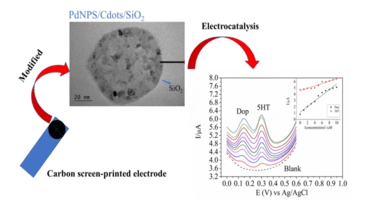
The hybrid nanostructures formed by PdNPs/Carbon dots/Silica were prepared in a single step, without external catalysts, by mixing TEOS with PdNPs/Cdots, where the Cdots have been previously prepared by electrochemical means using n-propanol as carbon source. Palladium nanoparticles (PdNPs) containing Cdots (PdNPs-Cdots) were pr
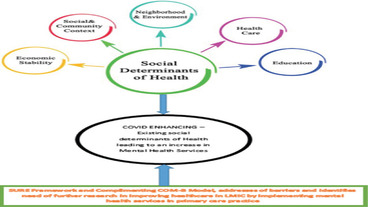
General primary care workers and family physicians are a crucial work force in managing the mental health of people in any given region. However, the barriers they face in low- and middle-income countries (LMICs) may be worsened by the pandemic. This review aims to bring together evidence about mental health treatment challenges
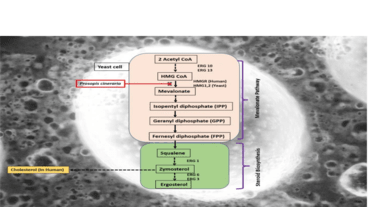
Yeast-produced Single Cell Oil (SCO) stands out as a promising alternative owing to its elevated lipid yield within confined spatial parameters, coupled with the inherent ability to manipulate lipid quality. In this investigation, banana peel serves as the carbon source for biotransformation by Rhodotorula mucilaginosa into lipi
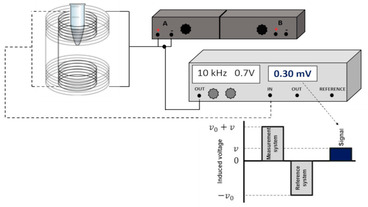
Once administered in an organism, the physiological parameters of magnetic nanoparticles (MNPs) must be addressed, as well as their possible interactions and retention and elimination profiles. Alternating current biosusceptometry (ACB) is a biomagnetic detection system used to detect and quantify MNPs. The aims of this study we
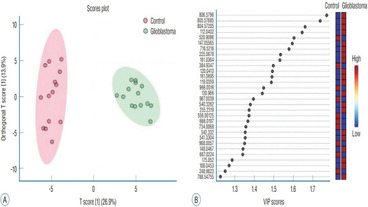
The types and functions of lipids involved in glioblastoma (GB) are not well known. Lipidomics is a new field that examines cellular lipids on a large scale and novel aplication of lipidomics in the biomedical sciences have emerged. This study aimed to investigate the potential of blood lipids for use as biomarkers for the diagn

Innovative sensing and imaging tools for probing functions of individual live cells in a highly heterogenous cell population in real time would revolutionize early disease diagnosis and treatments. Current tools are unable to real-time probe molecular functions of single live cells with adequate quantitation, spatial and tempor
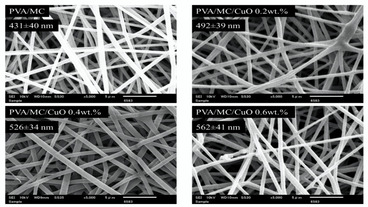
Antibacterial and cyto-compatible tricomponent composite electrospun nanofibers comprised of polyvinyl alcohol (PVA), copper II oxide nanoparticles (CuONPs), and Momordica charantia (bitter gourd, MC) extract were examined for their potential application as an effective wound dressing. Metallic nanoparticles have a wide range of
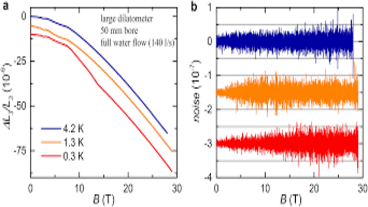
Capacitance dilatometers have been used to measure the thermal expansivity of various materials from 2K to 873K. Expansivity measurements were made using an Andeen Hagerling bridge with a 0.5 attofarad sensitivity and a ten digit readout. Expansivity readings were made every degree Kelvin for both warming and cooling of the sp
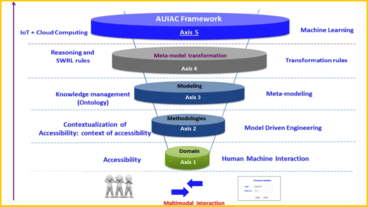
The substantial involvement of Adaptive User Interfaces (AUI) in providing adaptive and accessible interactive systems has created the need to establish a multimodal framework based on scalable adaptation rules. This paper presents an Adaptive User Interface to Accessibility Context (AUIAC) framework that provides a generic ada

